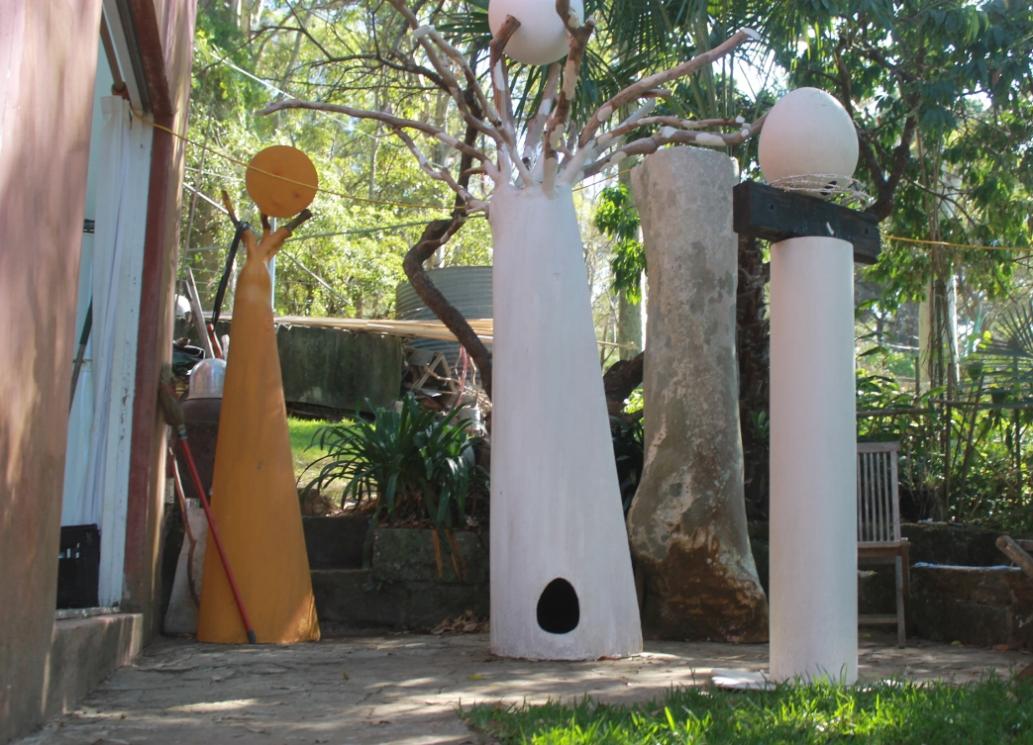May 12 - 18, 2019: Issue 404
Michael Digby Kitching
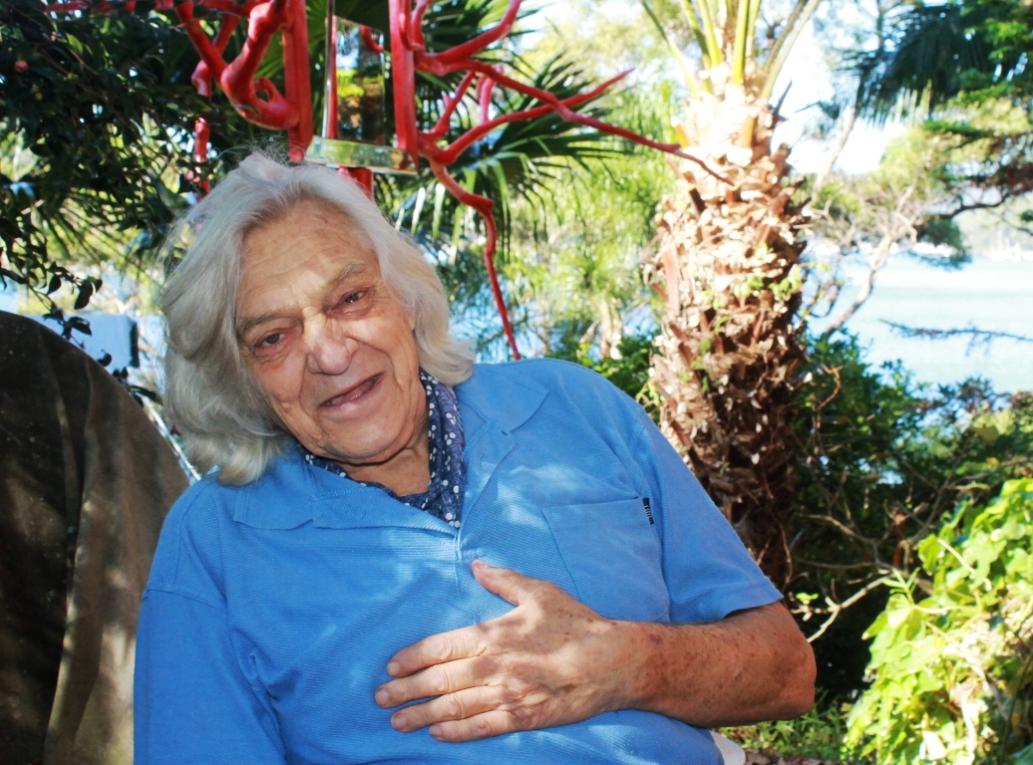
VALE — MIKE KITCHING
18th May 1940 to 28th April 2019
Service was held at
St John’s
Mona Vale
1pm Thursday 9 May
afterwards at The Pasadena
Mike won the Blake Prize with his monumental "Last Supper - Premonition". In recent years Mike has received numerous commissions including major works for the supreme court building, Sydney Olympic Park Peace Monument and Kingsford Smith Airport, Sydney. Kitching's work is represented at the Australian National Art Gallery Canberra, Art Gallery of Western Australia, Mildura Arts Centre, Queen Victoria Museum and Art Gallery, Launceston, and Ballarat Art Gallery.
Sculptor Michael Kitching was born in 1940 in Hull, England, UK, moving to Australia in 1952. Growing up in England, he often visited galleries and museums with his father, James Digby Percival Kitching, a military trained engineer and builder who was responsible for building two major oil refineries in the UK during WWII. Digby also built the Harbord Diggers Club, St John's Church Mona Vale where Mike's service was held, the Dee Why Library and many more. It was through his father’s creative influence that Mike Kitching’s love of art was founded, teaching him also how to work, construct and create with his hands.
This week, as a Tribute and in Memory of a true rapscallion and Artist, his 2016 Profile.
There's something about Sculpture and Winter that echoes each other and melds - it may be the bare branches, or the frosty mornings
that make everything stark, vivid, still.
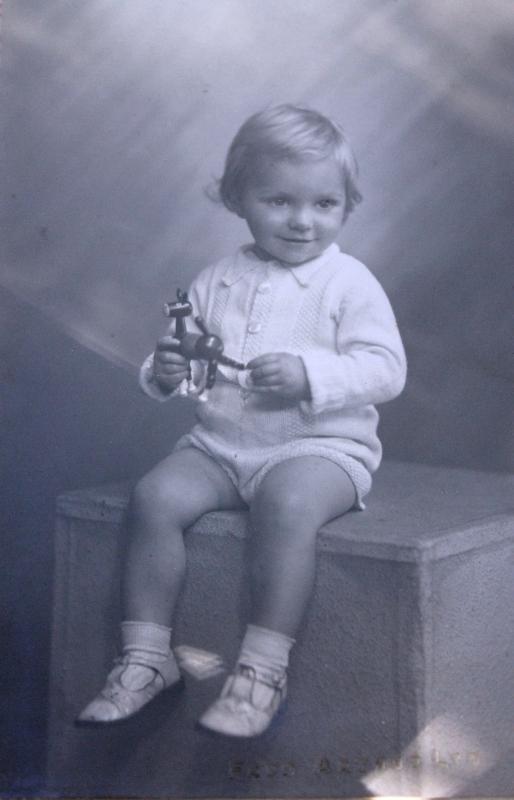
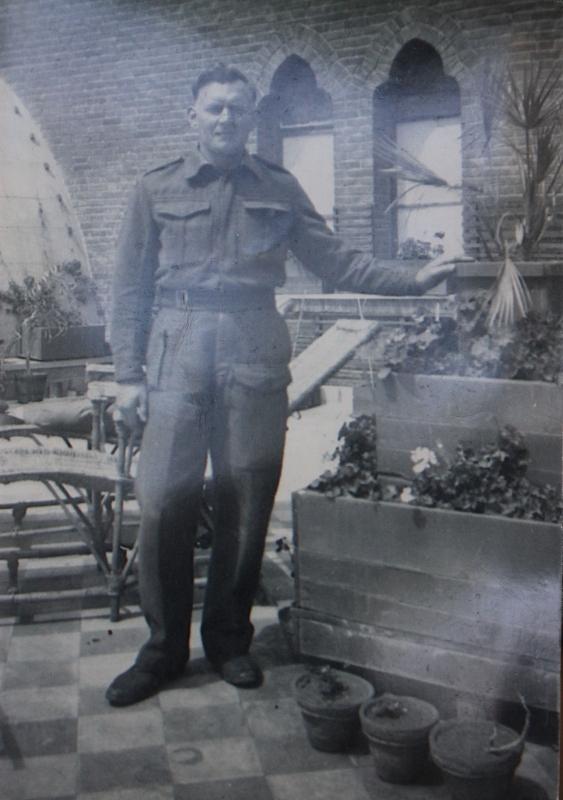
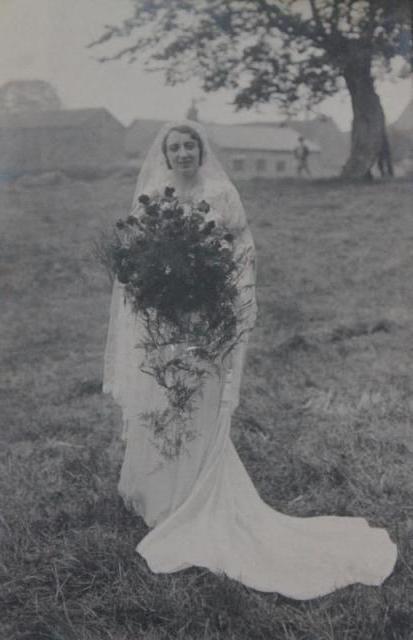
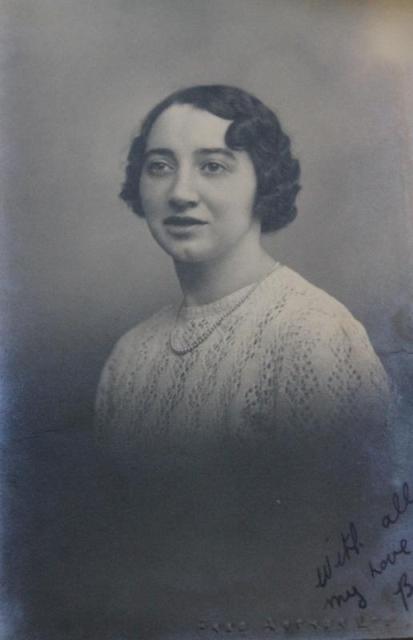
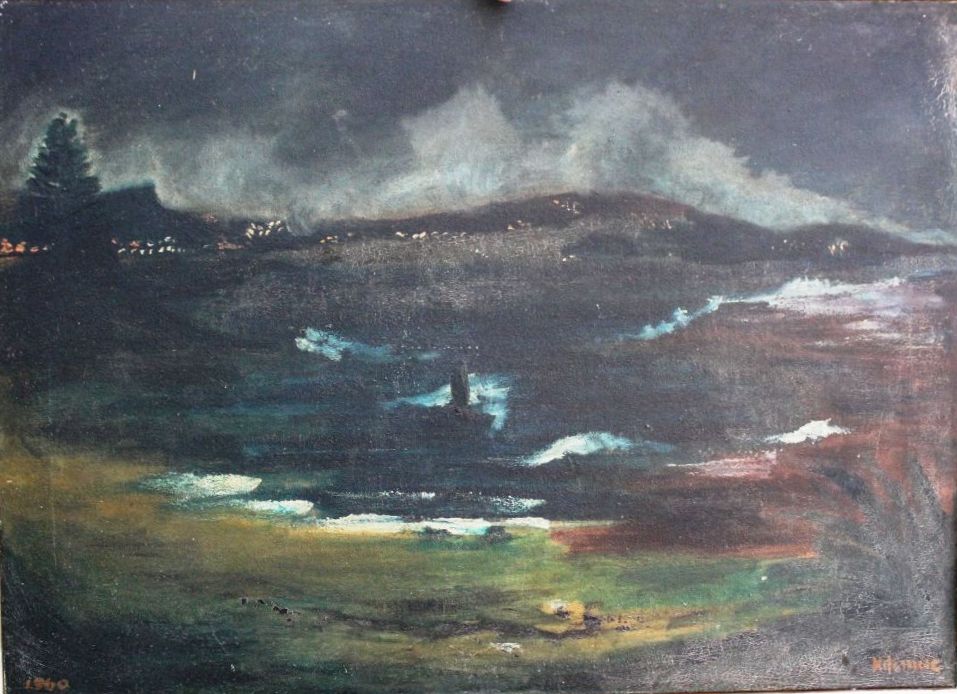
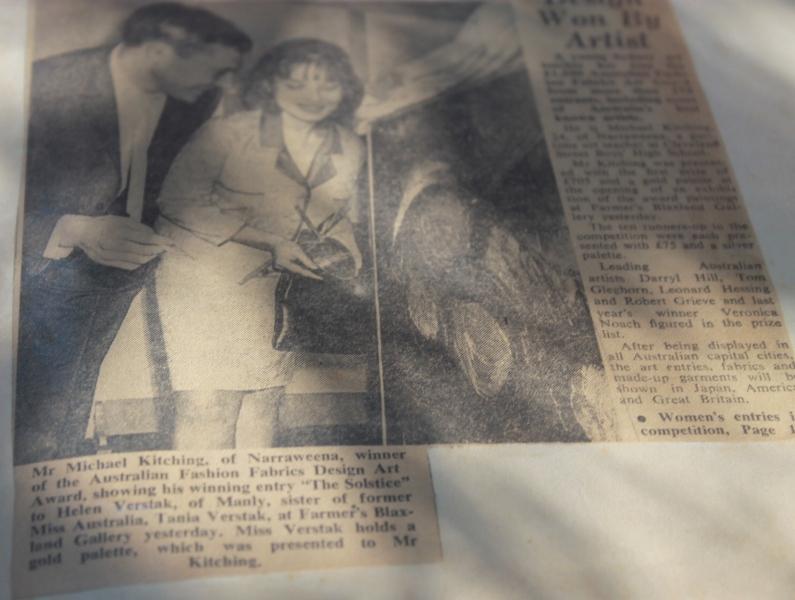
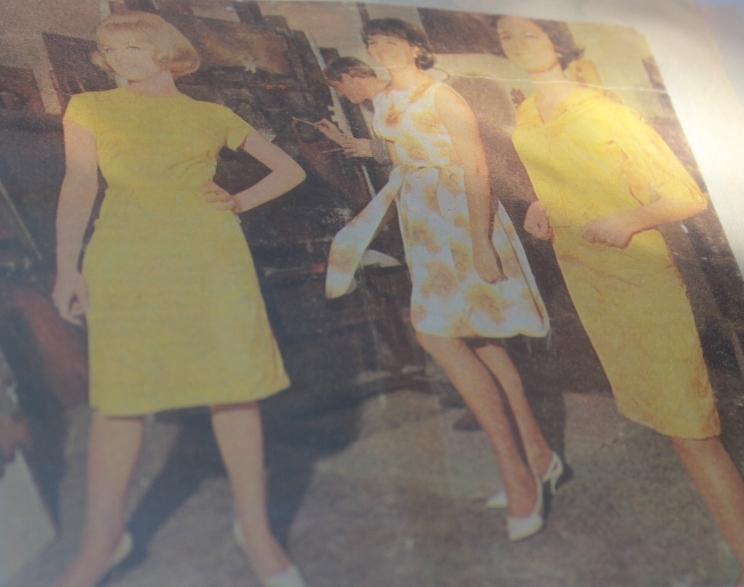
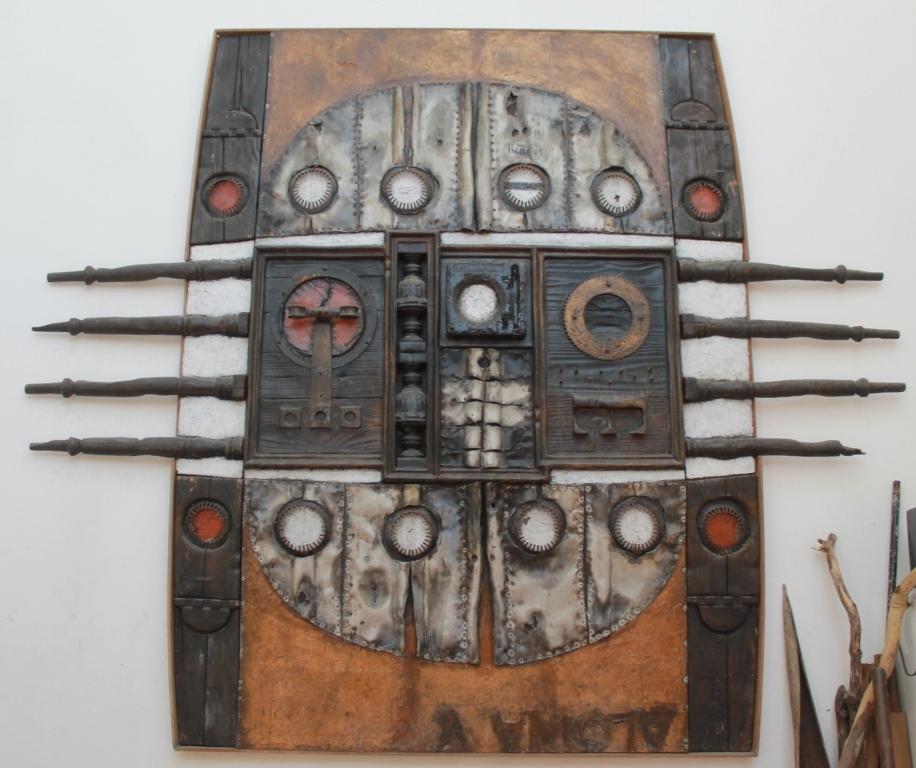
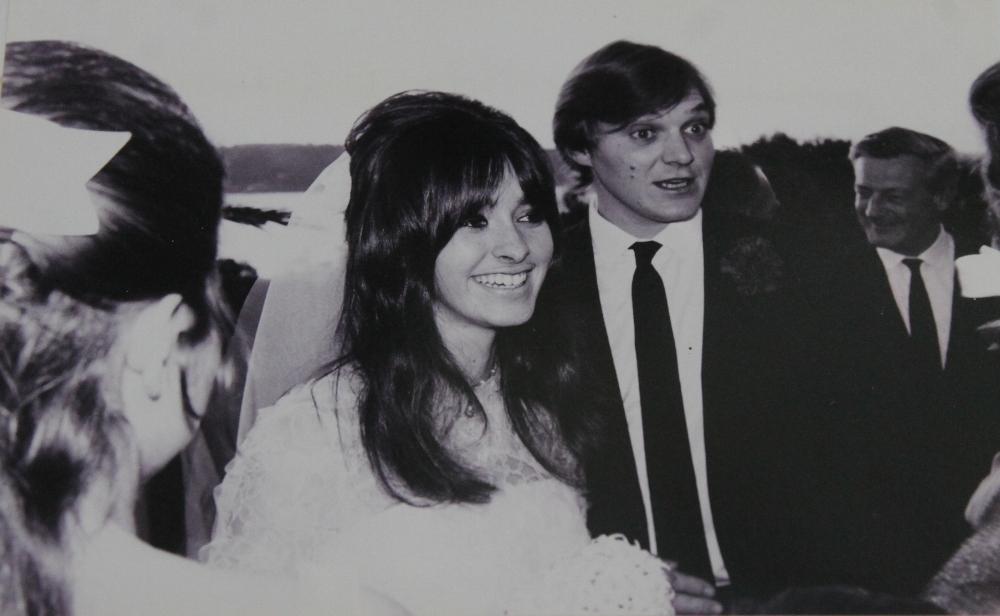
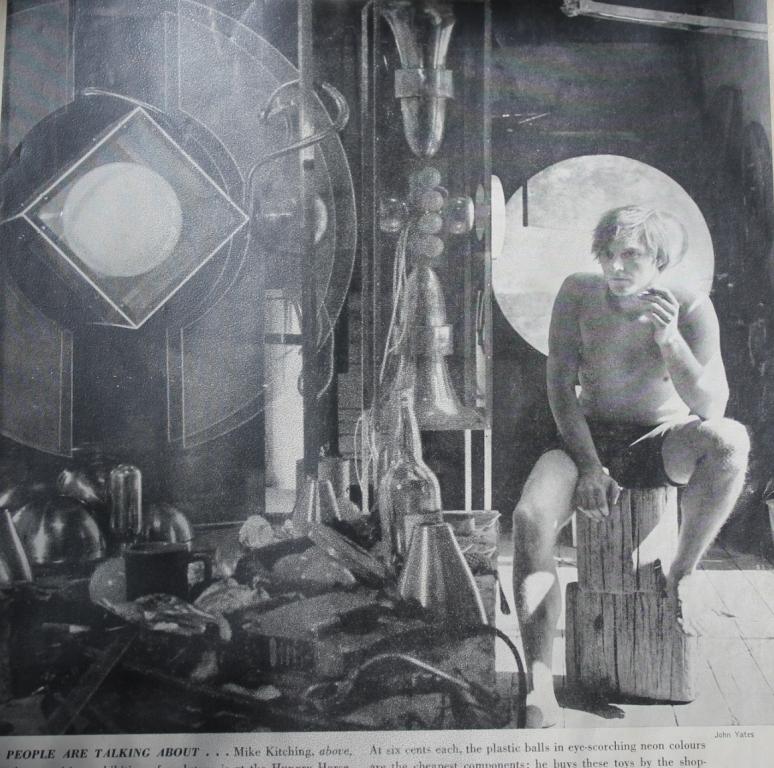
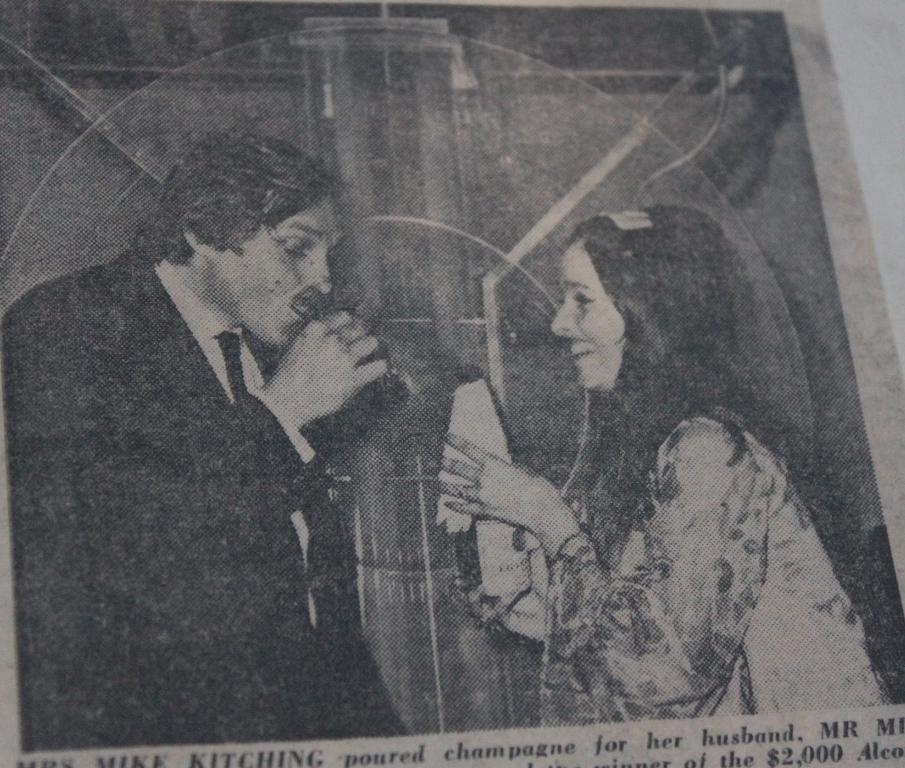
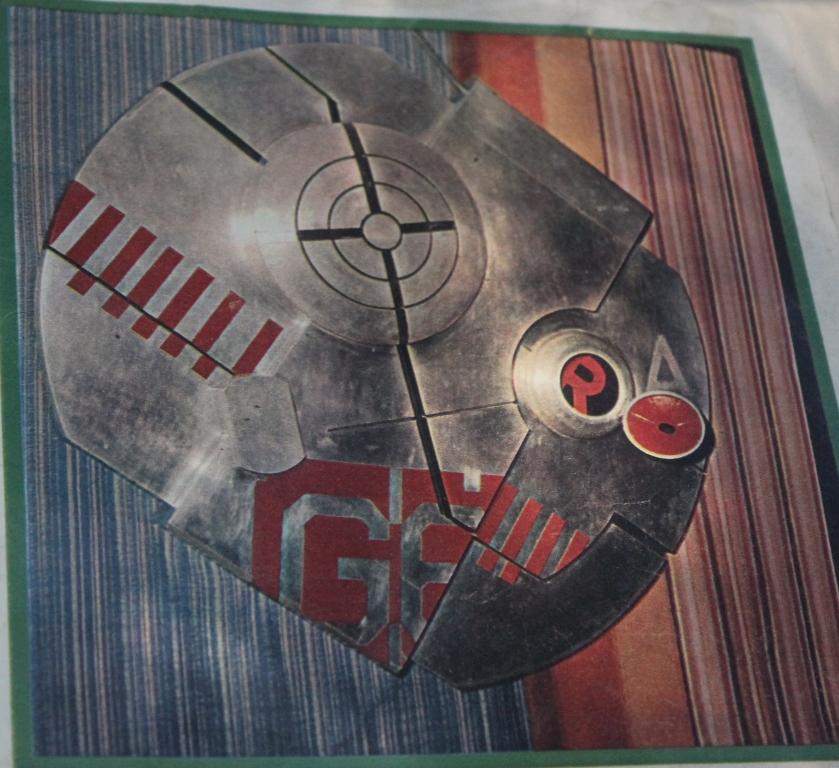
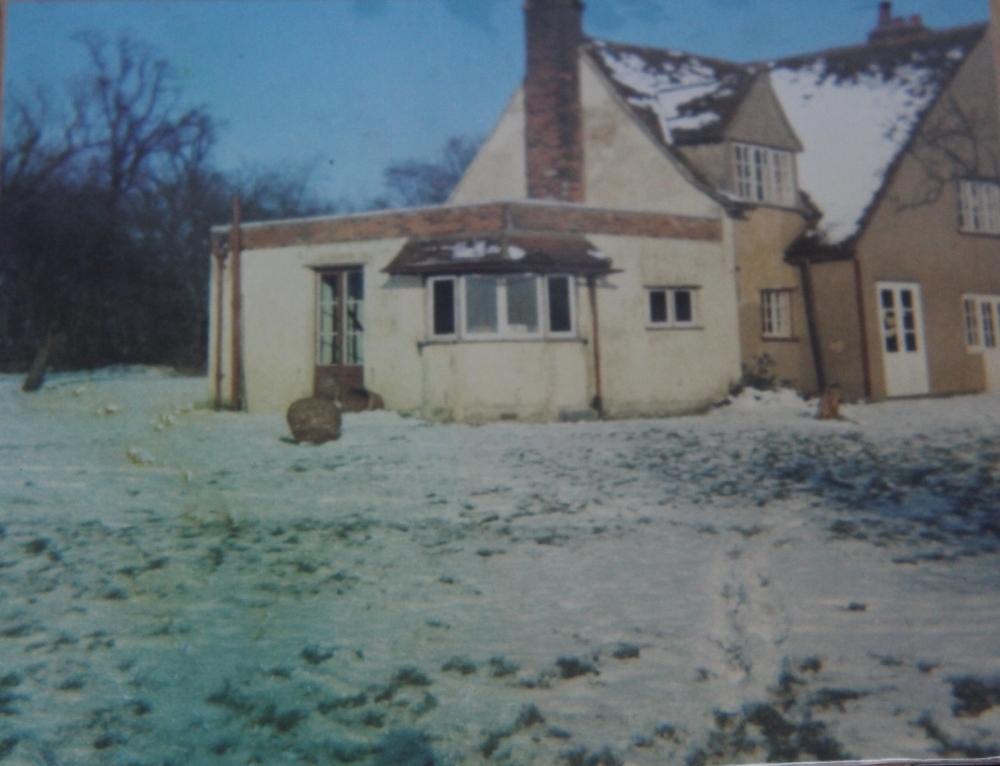
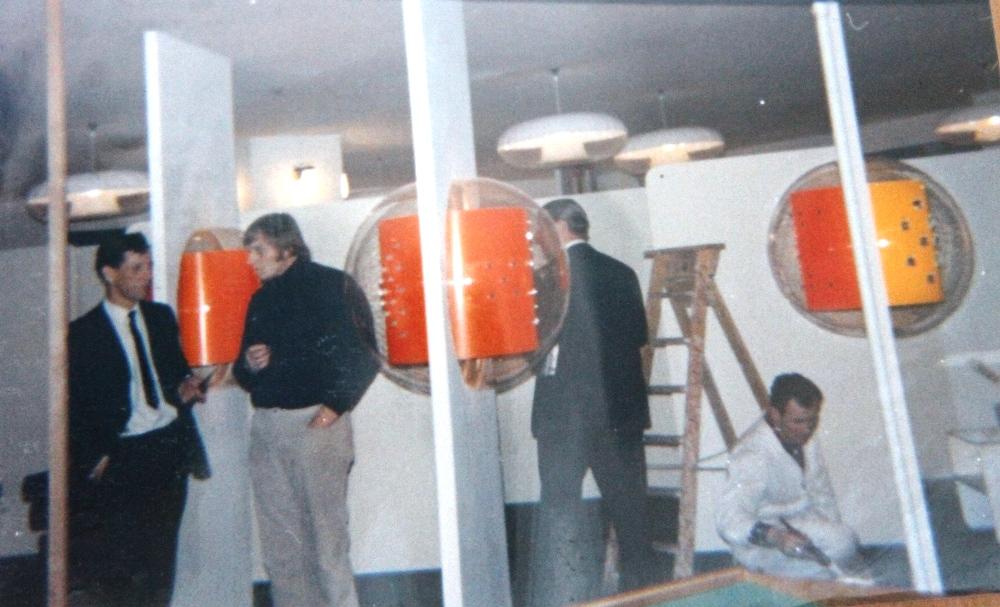
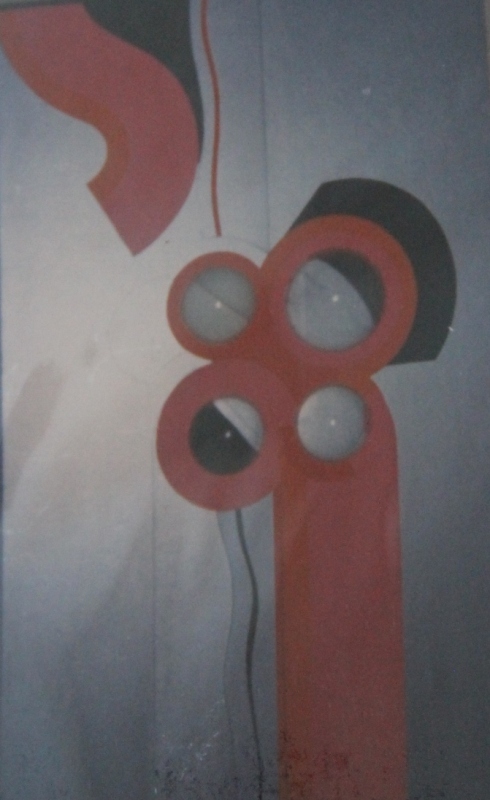
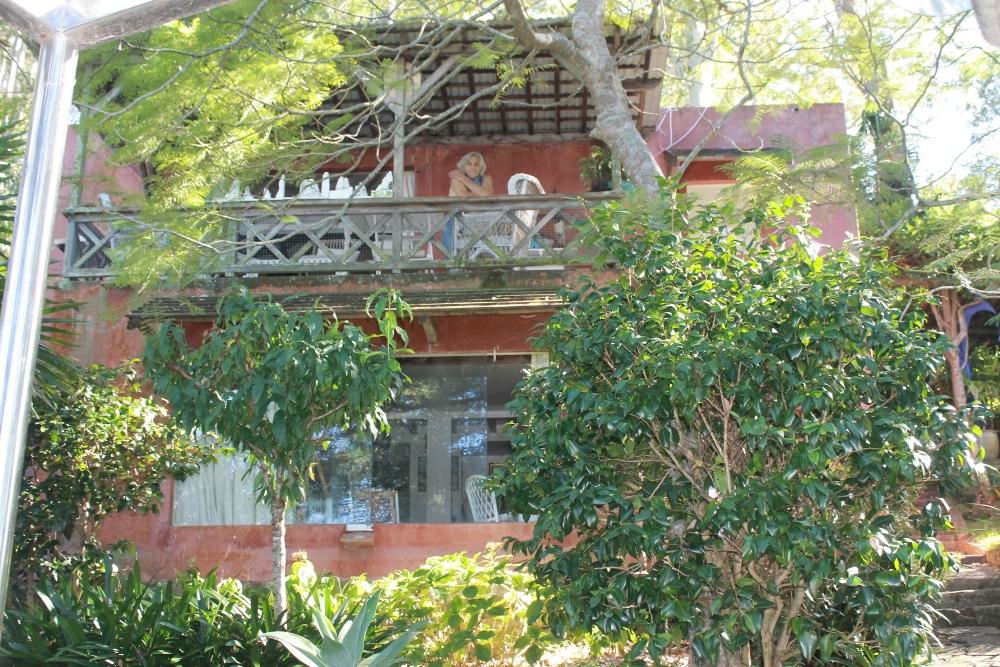
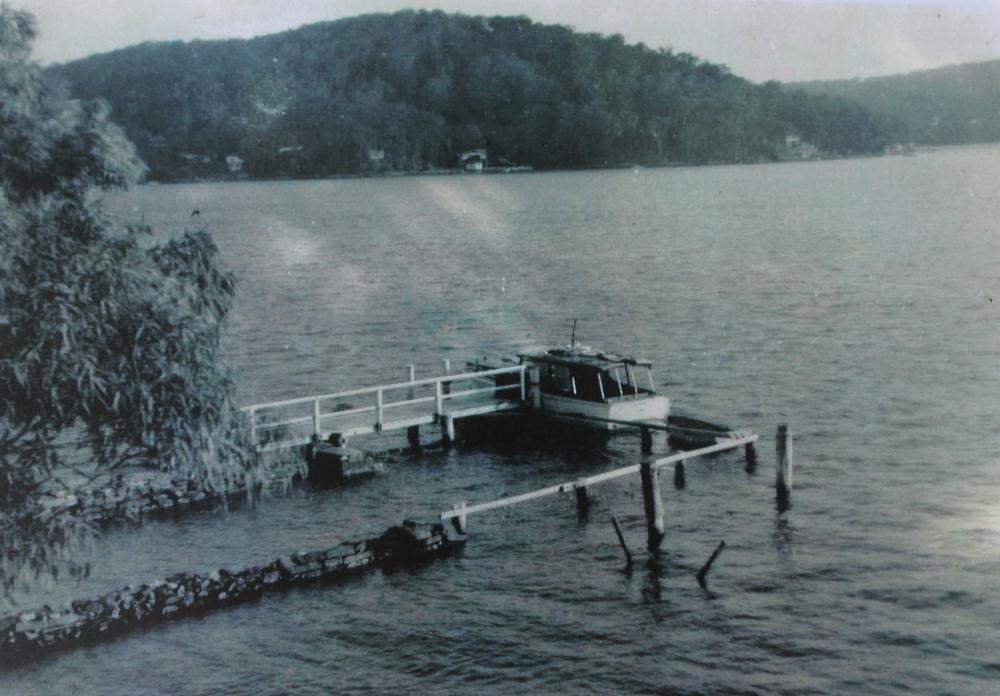
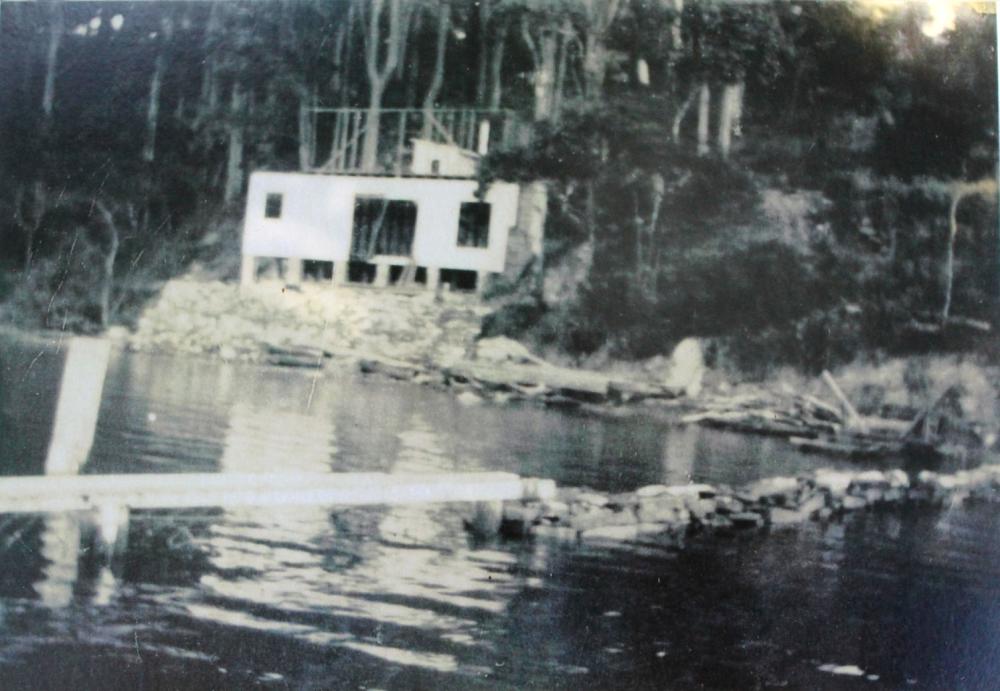
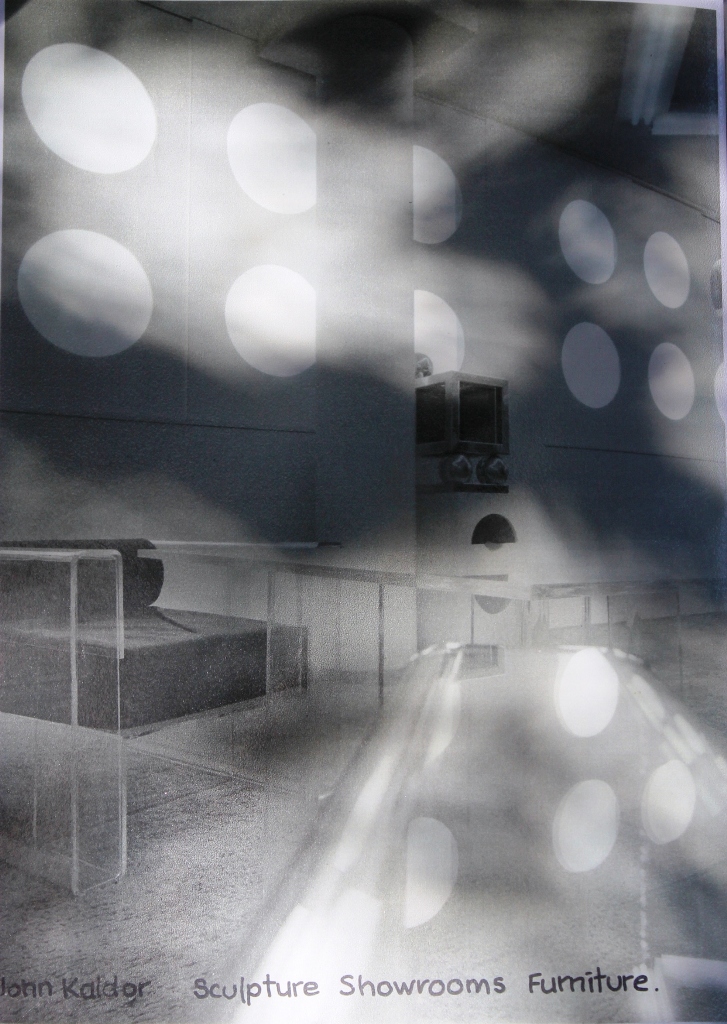
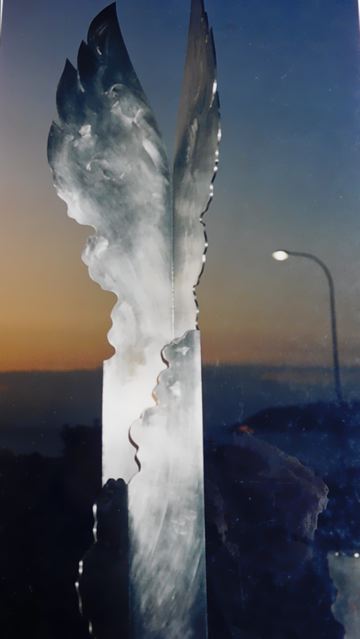
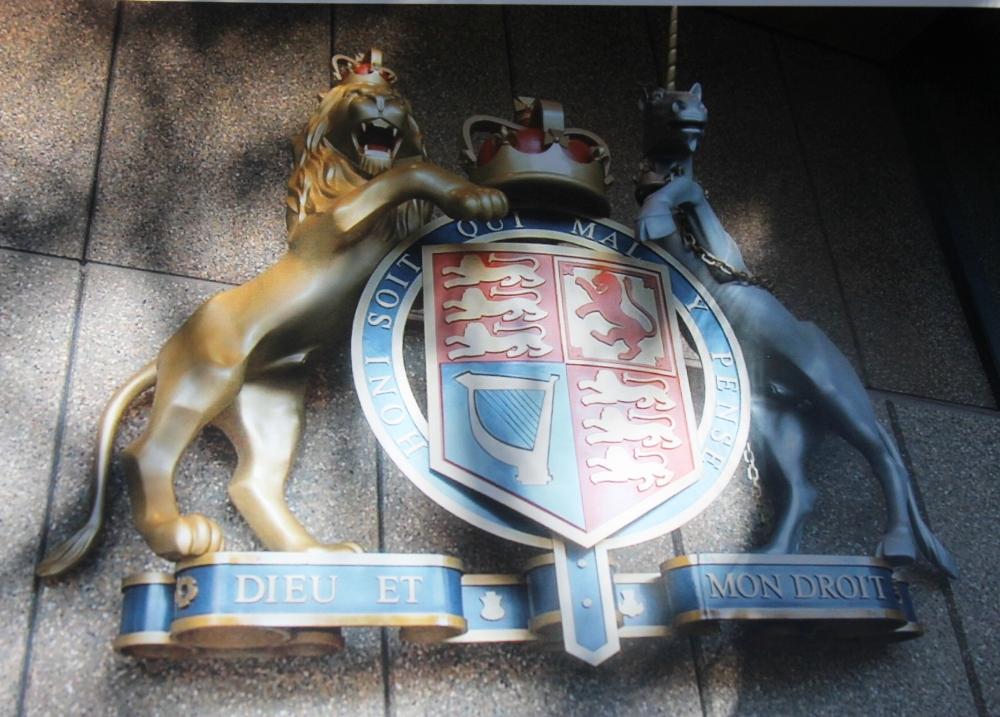
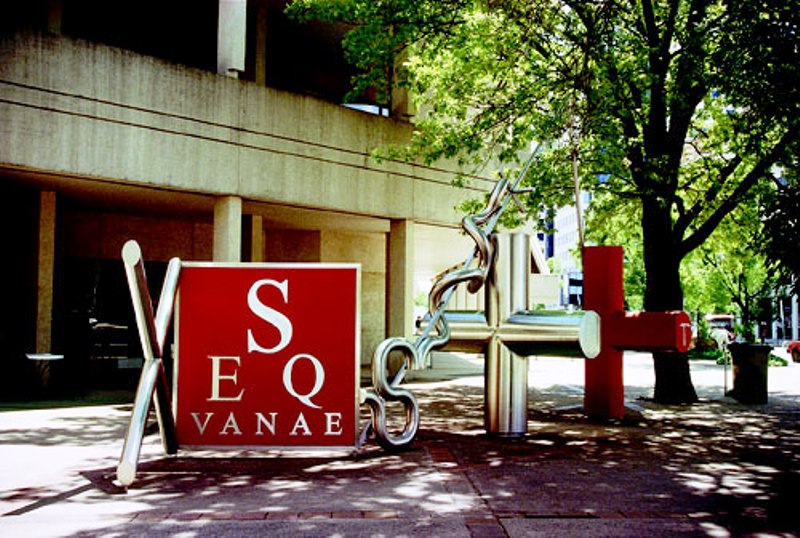
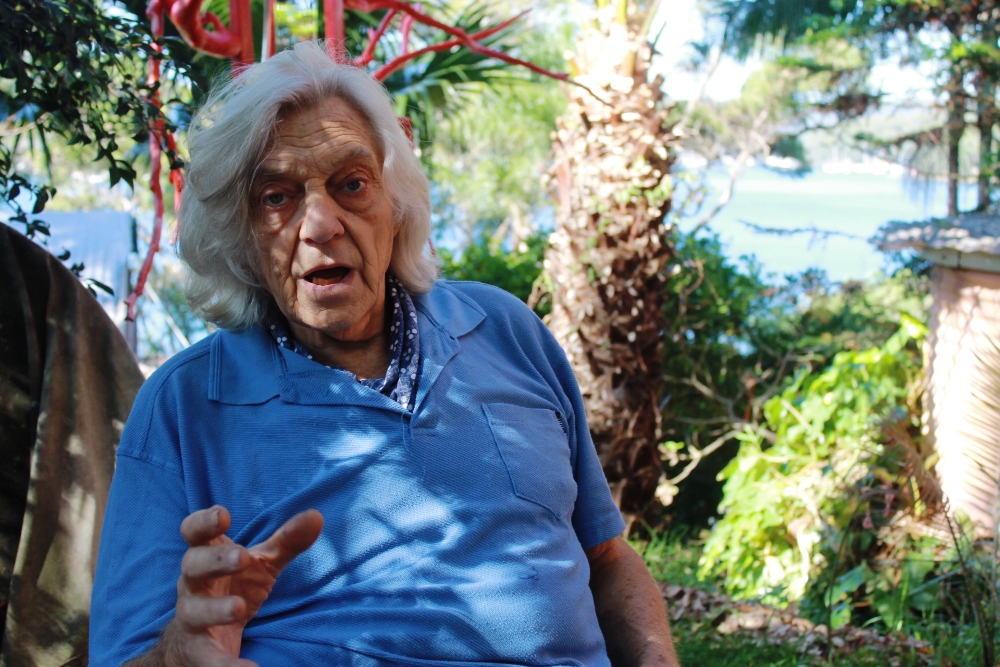
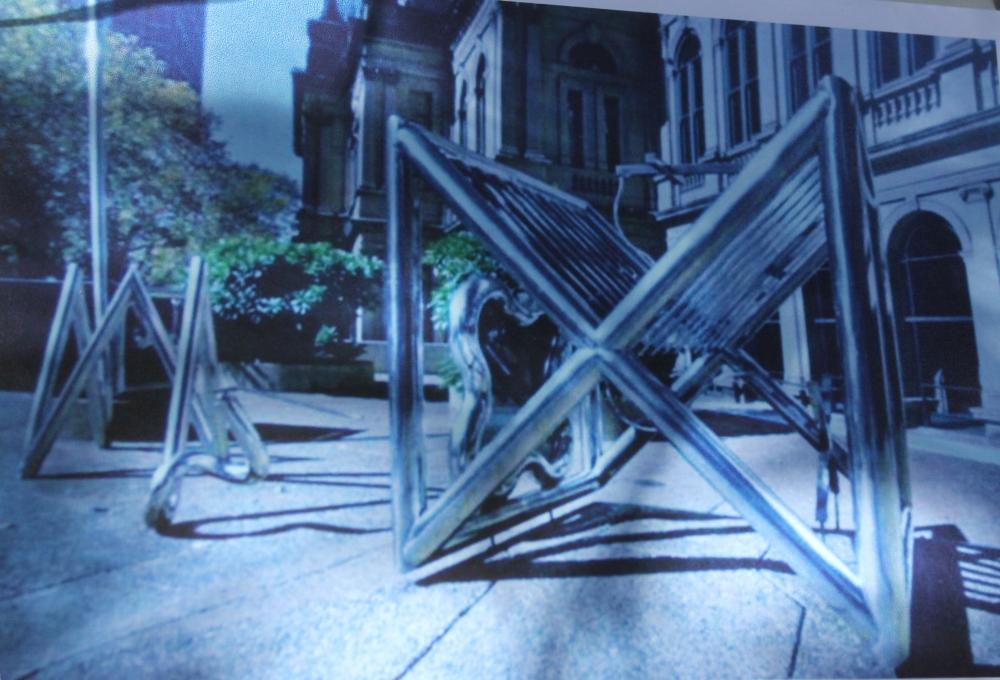
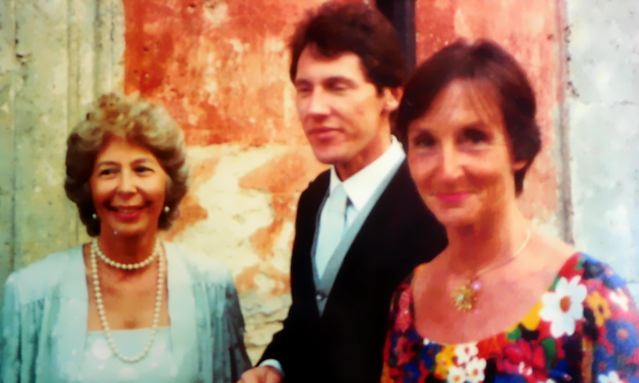
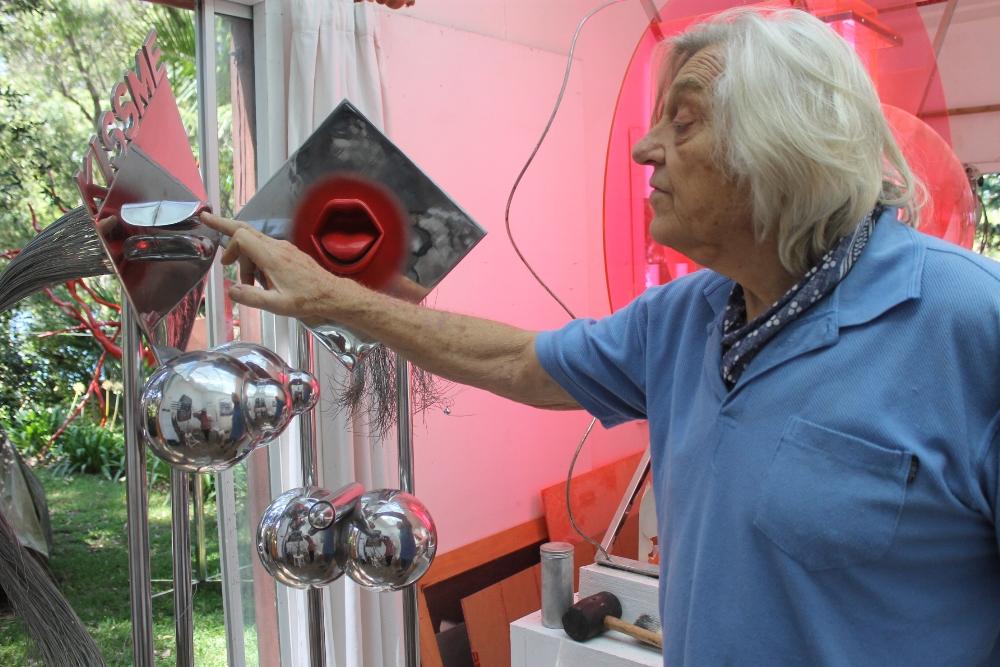
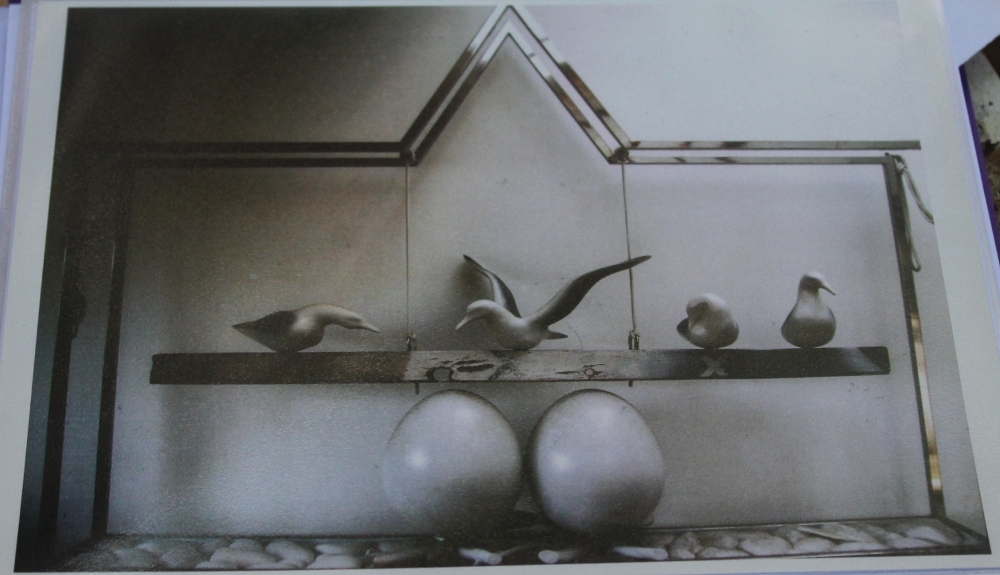
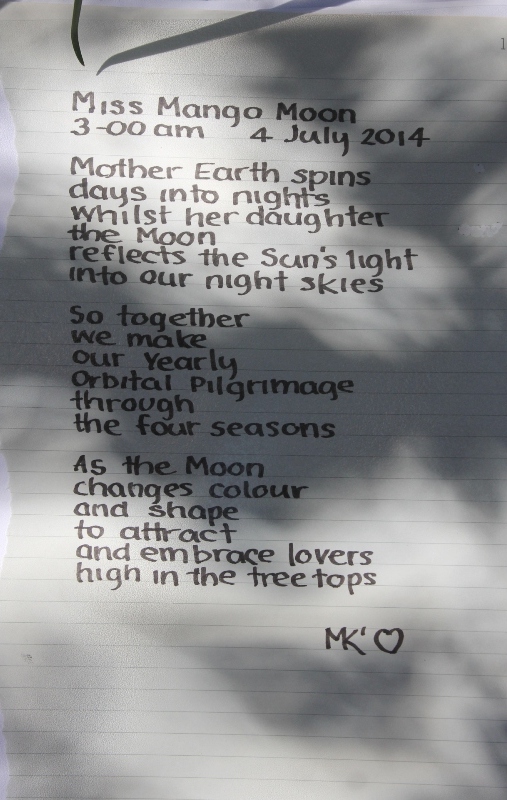
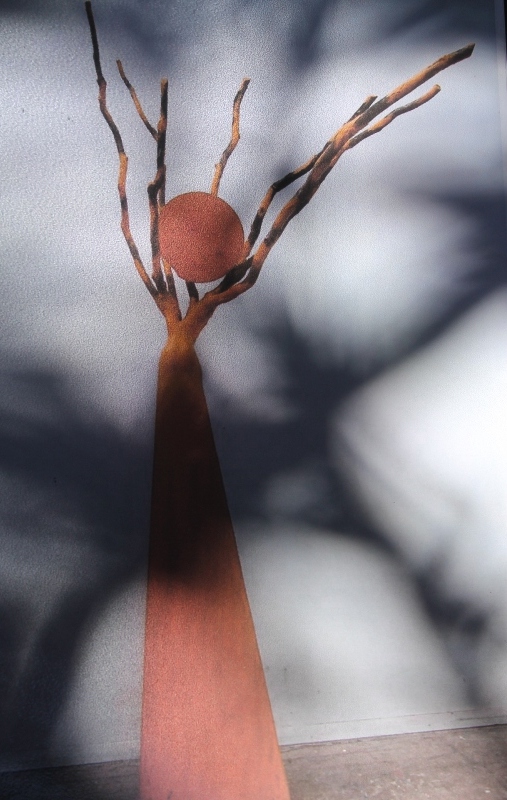
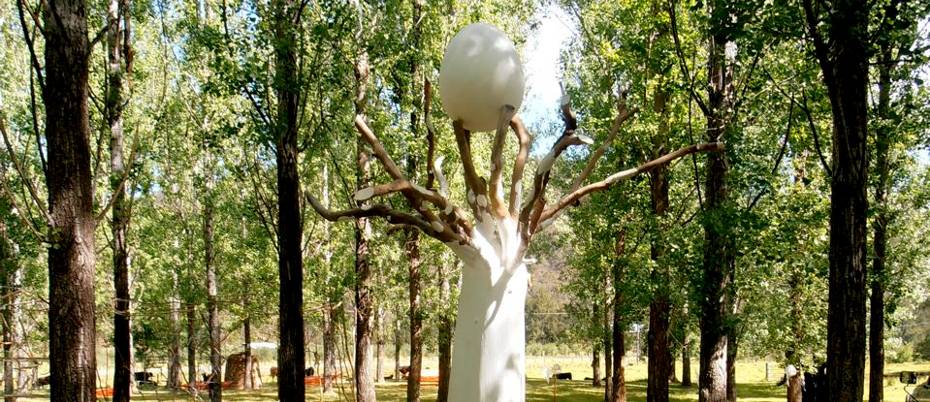
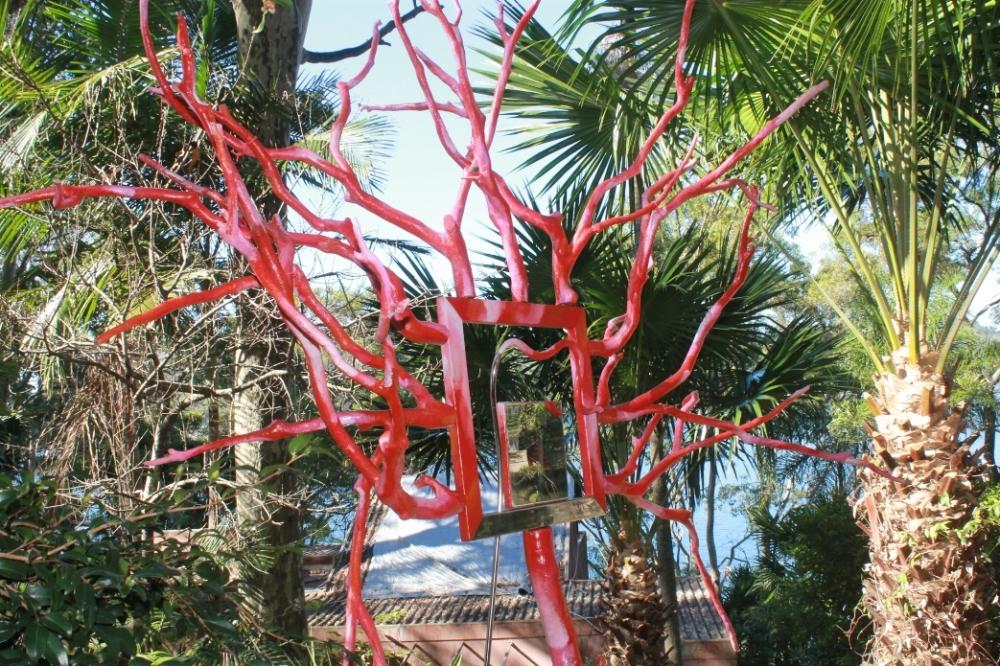
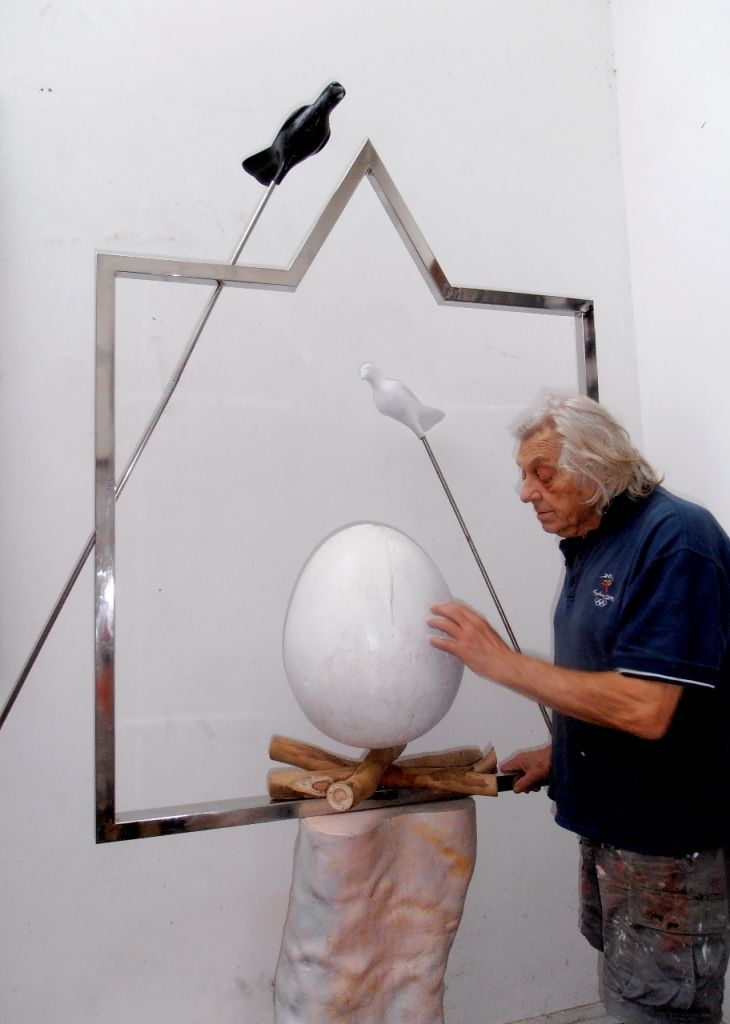
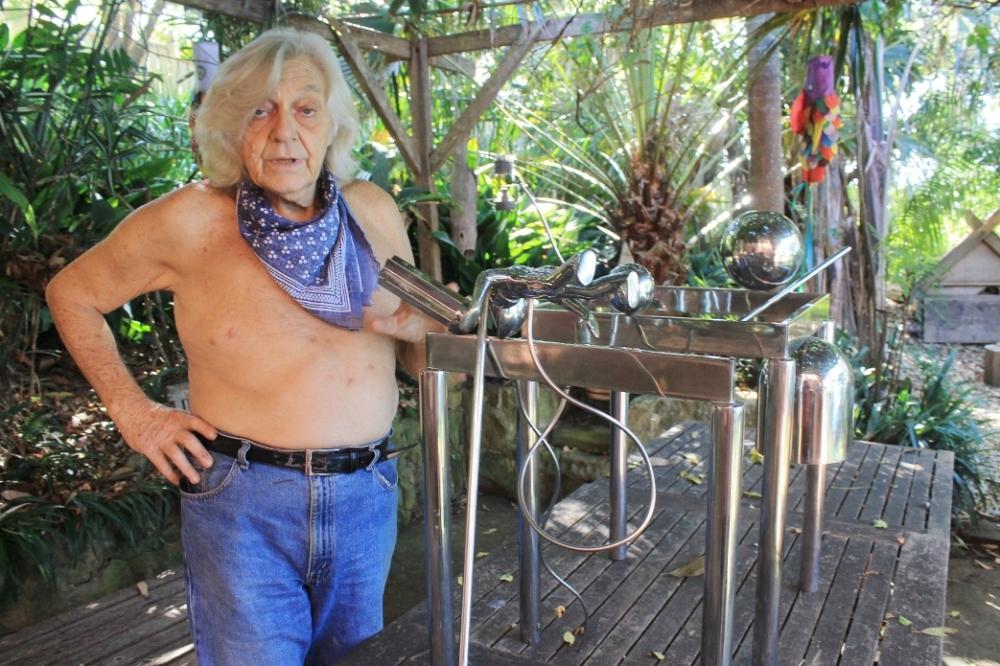
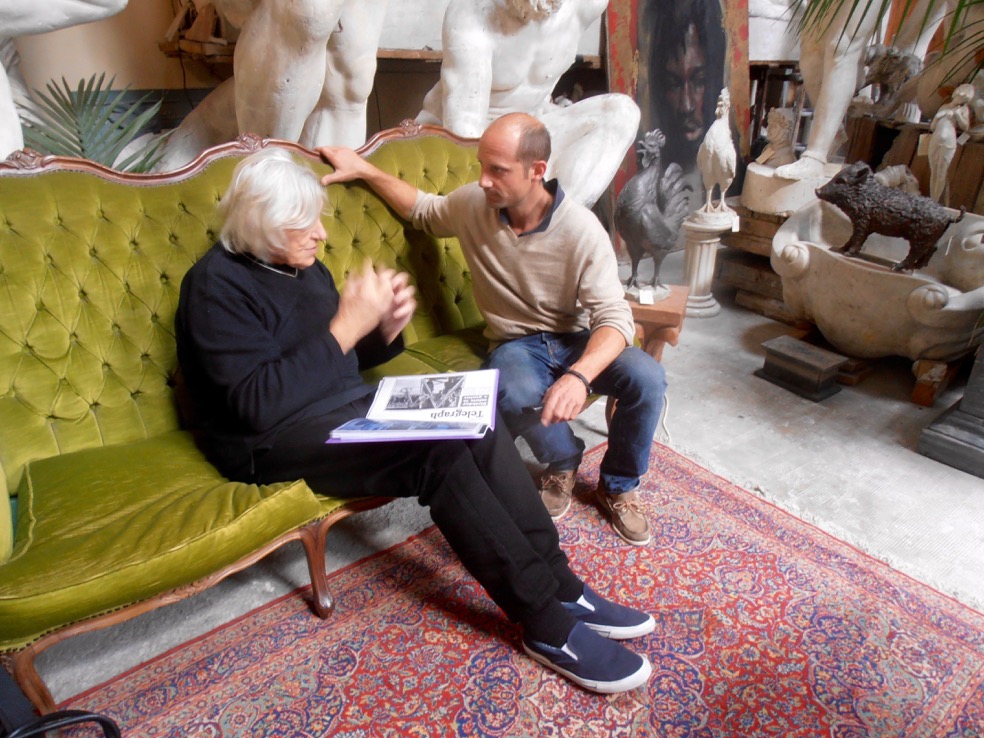
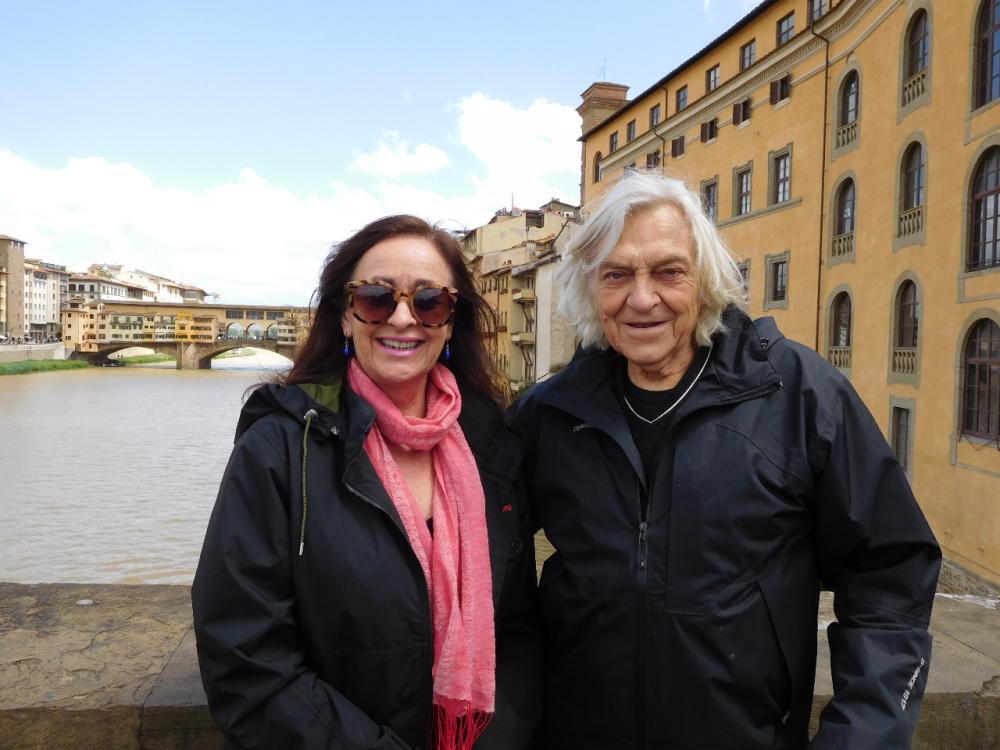
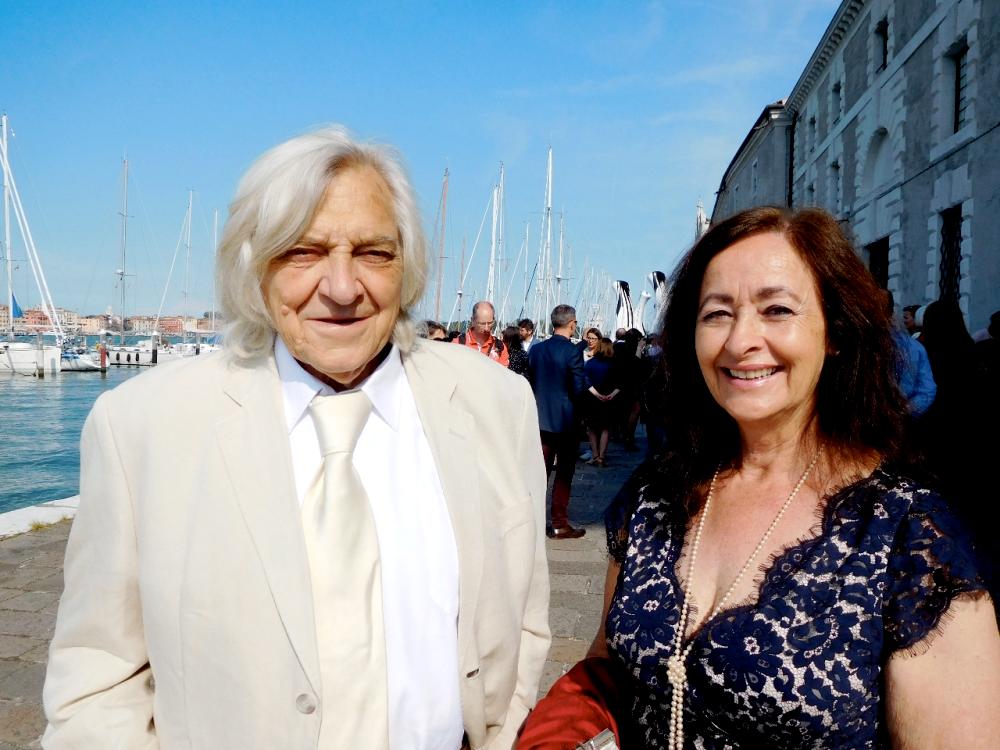
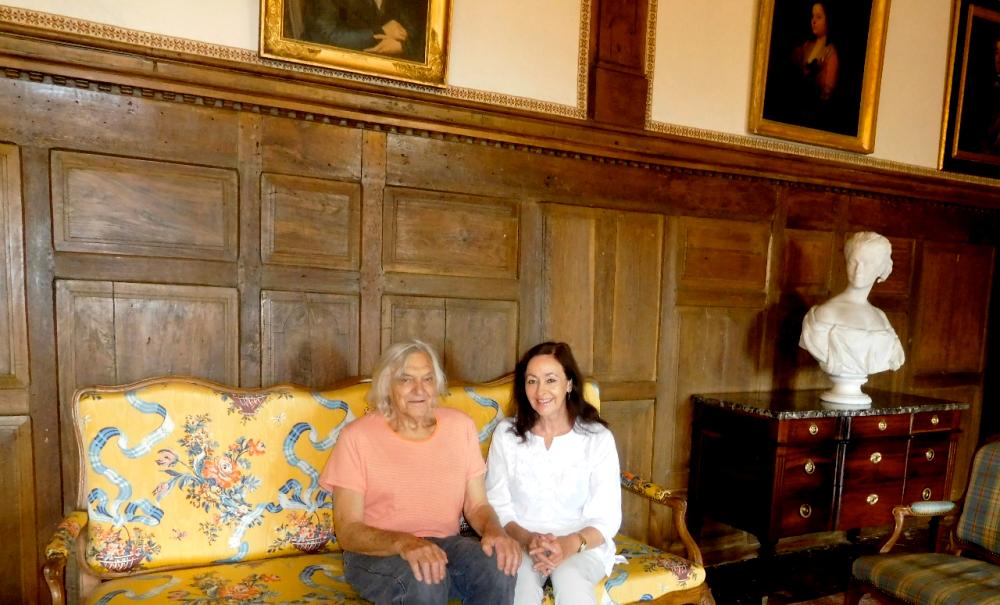
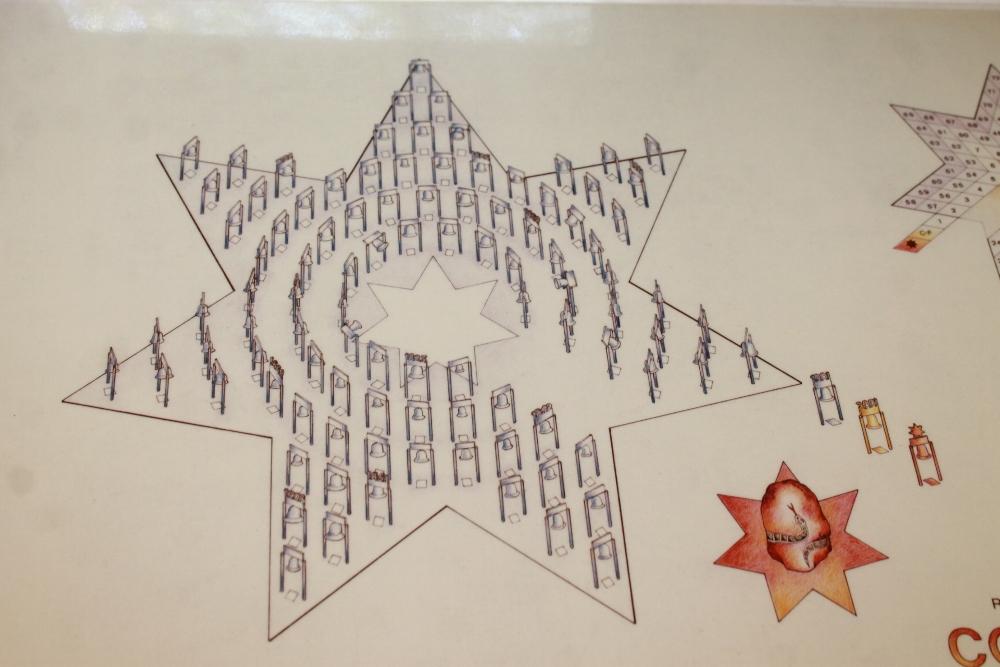
Artist of the Month in August 2016 was Michael Kitching, a Little Lovett Bay gentleman who has won so many prizes and awards in the field of Art wife Antonia has embarked on a project that may take a while - a book catalouging his 52+ years of works. He is married to Antonia Hoddle, past Artist of the Month, a wonderful Artist in her own right and a lady he is still deeply in love with - which shows!
He was one of Australia's finest Artists:
Where and when were you born?
I’m English, I was born 1940 in Hull, Yorkshire, the eldest son, to James Digby Percival and Elizabeth Kitching. We lived in Cheshire as most of Hull was bombed during the war until it disintegrated. Our own home was blown up six times.

Michael at 4 – dressed in all his mother’s knitting 'she was very good at this' I remember the little wooden horse I'm holding

Mike’s father – photo dated 24.3.1946 – the hothouse at his parents home – he had just returned from Egypt ' Dad was made of serious stuff, was an adamant non-drinker as his father had been very fond of whiskey.'


Mike’s mother – bridal outfit and a studio portrait
We came out to Australia in 1952 when I was 12 years old.
What I remember most from then is the dockyard where the ships pulled in. That wasn’t unfamiliar to me because where I was born as a place called Hull, which is a harbour about the same size as Sydney, with a very similar layout. Hull has a big bay at one end and a bay at the other end.
When you leave England you have to dot the ‘i’s and cross the ‘t’s so you are there on the dockside for about a week – then someone says ‘the boat’s on its way, you can cross the Channel now’…. ‘mad dogs and slow boats, that’s what it reminds me of’.
When we arrived we were on the same boat, you don’t just get of and camp on the foreshore, you have to have some accommodation for a couple of days to figure out where you are and where you will go.
My father had secured a job to build an oil refinery prior to us leaving England. This was to be built in Kurnell, in Botany Bay. He had experience in this during WWII.
Where I was born is on the same latitude as Hamburg, and Hamburg is only about 80 miles away. They had the biggest oil refinery on the planet there, all ready to receive the Arab oil coming in and of course, WWII eventuated and we flew over the top and blew it all up. They built it again and we blew it up again.
At Hull there were also primary targets identified: three near Stoneferry, the water works, gas works, Sculcoates power station, the oil refinery (Saltend) and the six docks.
On July 1st 1940 a similar raid happened at Hull, although we didn't lose our oil refinery, it was just damaged. This happened to be the day my father got called up (to serve) – they’d sent him a document in the post and he had to tick it and appear at such and such a place at this time etc., …
I remember it said something about ‘don’t worry about bringing socks because we’ll provide socks’ which I thought was hilarious.
There was a blank spot at the bottom of this document, ‘Civilian Occupation’ – he put down ‘Builder’ as that had been the family occupation – half of them are farmers and the few that weren’t were Builders and had been for a long time, generations, since 1722 in fact. I thought I too would eventually inherit this occupation but this didn’t happen.
At any rate, when the Germans bombed the Saltend refinery he was pulled back out of the army and they said to him, ‘you’re a builder, can you rebuild this oil refinery?’
He said, ‘yes, of course I can. But I wouldn’t rebuild it there because the Germans will simply come over the North Sea and bomb it again.’
He suggested they put it in the River Mersey, on the other side of England, where it goes towards Northern Ireland, and the Irish were in with us fighting at that time, there was none of the conflict that came afterwards then.
They said ‘no, no, we’re running this war, you’re the builder, you build it where we told you.’
So he did, and the Germans came over again and blew it to smithereens again. They did have the decency to apologise to him though and asked him to come back and build it at the River Mersey.
At the end of the war my father had ended up fighting in North Africa, he had been sent into Egypt and was fighting there.
When he came home he tried to buy a car because he’d always owned a car, which wasn’t that usual in England then. The business he ran, where he had good connections, had allowed him to get one. But there wasn’t a car for sale anywhere in England after the war because all the car manufacturers had gone into making guns, boats and tanks, everything needed to fight the war.
So next thing dad comes home with two axels, a front and back one, and then, so help me God, he comes home with a great pile of beautiful timber and built a wooden car on top of a steel frame. Of course then he needed an engine. They weren’t so difficult to pick up as there were a lot of damaged goods. The point being, I then had two sisters and a brother arrive, he was very busy after the war, that he would then take us driving all around England and taking us to all the different museums. That’s what I grew up with, that’s what stuck.
There’s a vital element in what you do as a sculptor to know of building though?
Oh yes, of course. All that understanding of what is needed there I owe to my father. I remember saying to him ‘dad, I want a bicycle’ – he said ‘come with me – see all those bricks there, I want them moved down there and placed there, there and there for those three brickies.’
He made me earn it, and not only that, this made me fit. I never resented having to earn anything and as a result I also picked up a whole lot of knowledge about structures. In fact my first proper job was with the NSW Education Department where I’d signed up to teach Manual Art: woodwork, metalwork and lastly and most important, and still most important to me and why my work has that flavour, was Engineering Drawing, which is sometimes called Technical Drawing.
This is vital if you have to build a house and progress in this area – first you have to draw a plan then do others for an elevation of a wall etc etc.
So I was sort of doomed to build things from the outset! (laughs)
Where did your family live when you first moved here?
Our family, myself, the eldest, and two sisters and a brother, settled at Kurnell, Botany Bay, but this was pretty rough on my mother, she didn’t like it. We shifted and wound up on the peninsula here, my father was offered a job building houses on Beacon Hill.
My father did a deal where we got an existing house whilst he built a whole estate for people like ourselves who were coming to Australia.
That was a walk down the hill to Dee Why beach, and a stagger back up again mind, but between that hill and the one we live on now, here at Little Lovett Bay, it’s keeping me alive.
Where did you go to school?
For the first one I was sent to Frenchs Forest Public School, but in the junior year, they put me back a year. I threw a mickey over that.
It was a nice school though, you were right in the bush. The school was good, there was nothing wrong with what they were teaching, but I’d actually won a scholarship in England to take me to a high school that dealt with Architecture and Construction. What they did by chucking me into Primary School was put me back a year which I was bloody annoyed about.
Eventually I went to Manly Boys High School. That went through phases, Balgowlah Boys High, then came a bit closer and then wounded up where it is now.
What did you do when you left High School?
When I left High School it was my intention to become a Teacher of all the things I’d been doing at the school – the woodwork, metalwork, the engineering and drawing, which I loved.
So you went to University after High School?
Yes, I passed and went into Sydney Teachers College, which was based near Taylor’s Square with bits and pieces all over town. From there you were sent to various other places. I completed that quite well, it took five years then.
I then got a tour of the West – Wagga was first. The headmaster there reminded me of Adolf Hitler’s right hand man, he was such a nasty person, the whole school disliked him as he ran the place like a concentration camp.
I really enjoyed teaching though; when you can help somebody do something it makes you feel good, it gives you confidence when what you have suggested to them actually works. I was a manual arts teacher later so always in around machinery and bits and pieces of things, wood.
When I was in Wagga, I couldn’t afford to live in hotels as Teachers were paid very little. Almost every other person in town had a Boarder who was a school teacher.
Unfortunately things started to go wrong a bit and I started to clock up complaints against me. They sent someone down from Sydney to see what trouble I’d actually caused and how they could fix it. Most of them were nothing to do with me but had been ascribed to me by the headmaster. The Inspector who had been sent down to in one way assassinate me ended up introducing me to his friend as ‘Mr. Mike Kitching, Head of the re-education of headmasters’. He saved my bacon.
I then went to Temora, a little town a bit further on. Then I got West Wyalong, I would joke in writing home to people ‘keep an eye out for a second-hand camel for me, I think I’m going to need one’.
This was a fantastic school, the end of the line and only catered for the local people. It was a beautiful place but very isolated. I planned to leave at the end of the year, and hadn’t told anybody at that point and would have regular arguments with myself as I enjoyed working for them, they just got all the answers right. I remember they got the whole school out to march into town singing ‘Waltzing Matilda’ – it was beautiful.
I remember there was a Chinese man Antonia was trying to help several years ago, he wanted to be a singer and asked to sing her a song. ‘Yes.’ She answered, ‘please sing Australia’s National Anthem.’ And of course he sang ‘Waltzing Matilda’ (laughs) - a beautiful rendition of it!
Who was the sour puss who changed this – a beautiful song, really Australian.
At any rate, I had decided to leave and it as there that my full time teaching career came to an end. I began doing some part time teaching work.
If you were a really difficult person and they couldn’t place you easily you got a year at Cleveland Street Boys High, which I did! This was about the fiercest school you could be sent to – I preferred the Second World War, in England, to that. At least during the war you knew they were trying to kill you and could take shelter. This was 1964 now.
The other thing that happened while there was I met a man called Elwyn Lynn, the English teacher, who knew I dabbled in painting and building things. He didn’t tell me until much later that he was the originator of the Contemporary Art Society. He told me that if I joined this it would tell me when to enter these prizes that occurred and what they’re worth and so on.
How did your Art begin?
When I was about four years old, my grandmother, my mother’s mother, gave me a set of paints. I’d always been painting but really began painting in earnest when my grandmother gave me this box of paints – this was a box of three where you just flipped the little lids on each over.
Antonia: The first painting he did is of Long Reef at night, it’s divine, an oil painting. On this one he started putting collage on the painting itself. He was still living at Beacon Hill then, before his father built at Bayview.

'Long Reef' - Michael Kitching, 1960
How old were you when you did this painting?
I would have been about 20 when I started this. This was a sort of collage idea.
Colour is always there and it was certainly much quicker to make an image with paint then it was to carve it out of bits of wood.
I was also struggling with falling in love for the first time when I made that painting, and it turned out to look like the last time at that stage! (laughs)
I had a serious good run at falling over myself and that’s how Long Reef came into the picture – the girl I was after lived on the south headland at Long Reef. So in my precarious days of wondering whether I should live or not, as she rejected me, I would wander along the beach to Long Reef and sit up on the cliff face where it was beautiful – I said to Antonia the other day that that is still my sacred ground – if anything goes wrong I still go to Long Reef and just sit there until the pain goes.
I recall her family was one of the few in the district that had a phone at that time. I found a public phone booth and called her up and asked her to come for a walk with me along to Long Reef, a beautiful day like today and one of the most beautiful days I my life because she was there with me. About two weeks later I got quite a substantial letter which said ‘I really loved that walk with you and thoroughly enjoyed our discussion on growing up…’ and one or two other things, which was one of the reasons I liked her, she had a wonderful brain, but the bottom line said ‘but I don’t love you’. (laughs)
That was dear old Erica, she was the most elegant girl I’d ever seen, or been close enough to see the details.
And that inspired painting Long Reef at night?
Eventually, yes. I didn’t do it immediately as I felt I’d broken an ankle or something – it wasn’t that I thought about it constantly but every time I moved felt something.
Antonia doesn’t know it but she helped me get over that.
Antonia: He had a job at Northern Sydney Council, well before I met him, and used to cut down billboard signs at night and paint paintings on these. The council didn’t know what to do with him because they’d give him a days work and he’d get it done in three hours.
Mike: yes, that’s what caused me to start pilfering – I got bored!
Antonia: These are his really early paintings, very thick impasto. He later won the Australian Fashion Fabrics Arts Award, sponsored by Roy H. Taffs – this is where they turned your paintings into prints that women wore – these were lovely.
Michael: I’d always done that as a child and had a talent for drawing and this is why I went into the Technical Drawing as well – I was good at being able to draw something so you could see what the hell it was and make it useful to others.
1964 - Wins the Design Award in Australian Fashion Fabrics Arts Award with 'The Solstice'; "meaning the depth of Winter and the height of Summer" - another article states he expresses a keen interest in astronomy. His prize is a gold palette and £750: this is the richest award of its kind in the world in 1964. An exhibition showcased all works in this at the Farmer's Blaxland Gallery before travelling around Australia and then overseas to Japan, the U.K. and the USA. His brilliant red painting with splashes of gold was made up into fabric for suits and dresses, 'for every age group'. Mike is living at Narraweena at this stage - but soon moves to an old stable at Coogee after this win, which he sets up as a studio. He's still working part-time at Cleveland street school too and has only been entering art prizes for a year.
A few press clippings from Antonia's files:


The new Coogee digs! Mike in the background and some of the Taffs garments made up from prints of other entrants
How did the sculpture emerge?
The sculpture evolved from the woodwork skills initially, particularly as I had a lot of this to teach when at West Wyalong, it’s the most useful thing you could teach anybody out there. At some time or other those kids were going to have to build or repair a shed or a toilet and this is something they would need. They would have very little use for French or similar subjects, but woodwork they could use. It was an obviously practical skill country people could use, so there a focus on this for them.
Teaching the woodwork had begun to evolve the sculptured work, I’d always made odds and ends but didn’t regard them as Art.
I remember doing a figure with a hat on while still at Teachers College which was rather like what the Aegean priests looked like.
Where did the idea for that come from?
Some of the Catholic schools I imagine as I’d seen these people walking through Mosman and elsewhere, dressed for conducting Church Services I suppose.
As I had met Elwyn Lynn, with his information about Art Prizes, I acknowledged that the way to get exposure was to enter these and try and win.
The paintings simply got thicker and finally they could stand on the floor on their own and I thought ‘why go back to painting things for a wall which I then have to put a frame around?’
voilà – sculpture!
“Sculpture is hard. It’s complicated. I have to get rid of that mental energy or I just fall over it” - Michael Kitching, 1969
1964: Young Contemporaries Exhibition – “Conscription” - £100 prize for his wood, iron, aluminium and paint assemblage “Conscription” – in the 24 to 30 age group. He said then the assemblage represented his feelings on conscription; “a little bit against conscription” but felt it may be a necessary evil. “I felt at the time I as putting the work together that conscription was rather an impersonal thing.
“It whips a person off the street, puts him through the mangle and turns him out as a piece of cannon fodder.”
The assemblage has a ‘mangle’ at the top made from wood and iron. This exhibition was organised by the Contemporary Art Society and the prizes given by the Sydney Morning Herald. The exhibition was opened by John Hopkins, then Director of Music at the ABC and the prizes were awarded by James Fairfax.
The 1964 Blake Prize

1964 Michael Kitching - Last Supper-Premonition – composed from table legs, corrugated aluminium panels, parts of an electric generator.
This was his second major art prize in three months – The Blake Prize for Religious Art is an annual art prize in Australia. The prize was established in 1949 as an incentive to raise the standard of religious art. Founded by R. Morley, the Reverend Michael Scott SJ, Rector of Newman College, University of Melbourne, and lawyer M. Tenison, it was named after the artist and poet William Blake. The first Blake Prize was won by Justin O'Brien in 1951. The Blake Exhibitions have been a regular travelling exhibition around Australia, visiting various major cities and provincial galleries.
The award of the Blake Prize to Charles Bannon in 1954 for his "Judas Iscariot" was one of the most controversial in its history; this opened controversy over what constituted religious art and over "abstract expressionism" which threatened to overwhelm the exhibition.
The prize is administered by the Blake Society.
Last Supper-Premonition, where did the idea for that come from?
There’s a famous moment in history when Jesus and his apostles gathered for a Last Supper and Iscariot blew the whistle and tried to get them all arrested. The rounds are haloes – these are out of an old electric motor but when you got one without the painting around them you see it looks just like a halo. This is the chalice that was given to Jesus to drink. This shows the crucifixion, and indicates Easter. They nailed Jesus to wood.
Did you decide you could make a living out of creating Art then?
No. it took a little longer but in 1965 I began pursuing it. I knew all along that if you wanted to be anything in the art world you had to be original.
With the Blake Prize winner that piece broke all the rules, the rules of aesthetics at that time were really rather precious; ‘if you left your footprint on the front doormat you were supposed to bring your toothpaste with you and clear it off’ you would encounter that sort of response.
It was an exciting time too though.
Winning The Blake Prize at 24 years of age, how did that feel?
Well, I had more whiskey, I’ve always taken whiskey for medicinal purposes. I think I took it for a week after that. I would never have a drink while working on a piece, from drawing to marquette to creating it, but afterwards I would, as a release.
The catch behind all of this really is, from beginning to end, I’ve always felt like an outsider.
You met Jørn Utzon as part of that win, what was he like?
I was always busy trying to accommodate what the politicians did to him. I became close friends with his daughter Lin. A friend of mine married her.
You will see in that article I’m down as an ‘Englishman’ despite being here for a while by then – you could attribute that to it taking a long time to lose a Yorkshire brogue.
Antonia: I met Lin when I was 16 and in Art School, we were friends here in Sydney.
Where did you meet Antonia?
I met her at an Art School where I was employed to go to and give Talks. The owner of this school, Mary White, had asked me to come in to her School of Art (The Mary White and John Olsen School of Art & Design – Edgecliff), and talk to her pupils on what it was like to be an Artist. It was 1965.
I stood at the back of this room they were all gathered in waiting to speak. There was this woman in front of me with this hairdo like two woven blobs of hair. When she turned around I could see her face, it was Antonia. I just went ‘wow’. That was it.
When I asked her if she would have dinner with me she asked for my name and then said ‘well, you’re lucky because my uncle has just bought one of your works’.
That was it, that was it forever.
Antonia: I had lunch with Mike on a park bench in Rushcutters Bay Park which comprised only of a bag of purple grapes - there was no dinner !!!
He had the most beautiful golden hair when I met him. I was 17, it was in an open studio, a big room. I was making a pot and Michael had met Rosie Monckton, Heather Glasson and Angela Wills-Allen, this group of girls, skiing. Mike had won the Blake Prize and had bought two bottles of whiskey and an airline ticket. He went to the snow with just the whiskey. When he arrived these girls took pity on him, took him to the hire place and got warm clothes but I don’t think he even skied that first trip. The first time he skied was on our honeymoon. I loved skiing.

We were married on September 22nd, 1967 at St. Peter’s Church, Watsons Bay.
Mike had done work for the Charles Anton Memorial and Roslyn Lodge accommodated us for the honeymoon, so we went there. I didn’t realise he’d never skied because when he told me he met all the girls at the snow I assumed he skied, but he actually never got on skis.
He was a total liability on the slopes, high maintenance, I thought ‘what do I do??!’
Michael: I think I’m more dangerous than a liability…
Antonia: what do you do with a guy who will not cope with young macho ski instructors …I went down to the listing of ski instructors and found him a lovely mature English woman called Angela who was obviously willing to avert this potential disaster.
He ended up having a lovely time, thank goodness.
Charles Anton was the founder and first president of the Australian Alpine Club. He was a pivotal member of the syndicate that established the Thredbo Ski Resort post WWII. Roslyn Lodge was named as a memorial to Roslyn Wesche, who was tragically killed in the 1956 avalanche that destroyed Kunama Hütte on the main range
Antonia was working for John Kaldor at that time. He had a connection to Antonia’s family through the Second World War – someone in Antonia’s family had looked after someone in John Kaldor’s family, and I met him through her.
I can tell you I really fell over her.
Michael Kitching was exhibiting as a painter three times a year by then, but felt “there was more to it” He won two scholarships, travelled in Europe for two years and came back with a renewed interest and determination to pursue sculpture. He stopped painting as it didn’t suit his temperament – sculpture did, it offered a way to combine all his interests and sense of space and shapes.
1966 “Homage to Space”
Michael: this was around the time they sent someone up to the moon. You were either dead or taking too many sleeping pills if you didn’t think that was exciting time to be alive and on the planet.
March 1967 – wins Flotta Laura Scholarship $3000 – Flotta Laura are a shipping line
You won the November 1967 Alcorso-Sekers Travelling Scholarship in scholarship which took you and Antonia to Europe – what did you do while there?
I’ve been embarrassed ever since about winning that prize. This piece, “Nevada”, was largely like a headlight of a car and turned out like a warning sign. It was on a stem and had a battery at the base which would light it up. I often thought I’d ring them up and offer to do another piece just to make up the difference.


Caption under this news article clipping reads " Mrs. Mike Kitching poured champagne for her husband, Mr. Mike Kitching, after he had been announced the winner of the $2000 Alcorso-Sekers Travelling Scholarship Award at a preview of the sculpture exhibition at he Art Gallery of N.S.W. on Friday. Mr Kitchings sculpture, Nevada, is behind them.
The Alcorso-Sekers sponsors were an Italian shipping company that didn’t’ really operate out of Australia and “Nevada” seemed about as far away then as you could get from what should have appealed to them.
For the Europe trip, as much as anything I wanted to go back to England. For Antonia, we wanted top go and meet her relatives in Italy.
What I wanted to see, for study purposes, was the whole Renaissance in and around Italy – Florence. I wanted to see the works of Leonardo Di Vinci foremost among these.
I used to call myself and Artists, Designer and Inventor, I had a wheelbarrow filled with ideas, Patents.
As I said earlier, I’d grown up being taken around to all the different museums and art galleries, I’d had a habit all my life of going to museums and galleries and castles. I can’t do that here – there are some wonderful galleries and museums but they’re only knee deep, so to speak, on the time scale. In places like Italy and England, where these things have existed for thousands of years you can immerse yourself.
Antonia: I can remember doing five castles I one day on that first trip.
Michael: we went all over Italy, wherever there was something of interest, something historic, or simply something that was just beautiful. Europe is the place to go for all of that and England, England is a garden.
The reason I live here (in Lovett Bay) is because this is so beautiful here too. My father built a place on the high hill behind Church Point, on Loquat Valley road.
Antonia: they built a home with a dress circle view of Pittwater – Lion Island, Scotland Island…Digby said he would have bought two blocks of land but couldn’t find the pegs.
Michael: the full catastrophe – a wonderful place.
Which was the first sculpture created for a commercial market?
For an Exhibition was at John Kaldor’s showrooms, a joint one with Ken Reinhart, Colin Jordan and Maria Gazzard. These were wood and aluminium

“striking metal sculpture painting by Michael Kitching – promoting a group of new acrylic furnishing fabrics, Cashmilion."
1967 – Mildura Prize for Sculpture the BP Acquisitive Award, Michael Kitching’s “Phoenix II”. Also Berrima District Art Society prize
In March 1968 Mike and Antonia left for Europe on the Travelling Art Scholarship, aged 28 at this stage and considered the leading young sculptor in Australia.

This is where we spent time at “Blind Knights” – this was a hospital for blinded knights during the Crusades. The house belonged to Cardinal Worsley who gave to Henry VIII to use as a Hunting Lodge.
Antonia: we got snowed in and had to go to a hotel.

This was for an exhibition in Europe - every year one country in Europe would put on an exhibition which was put on during International Year of Electronics.
We met the boss at PYE, Peter Threlford. We met him here in Sydney to begin with, he was friends with Antonia’s family.
When I met him again in Cambridge, he was there to do a presentation, it was Britain’s turn to put on an International Electronics Exhibition.
Antonia: so we did this with inflatable’s, which were made at a factory at Acton.
Michael: the whole thing was inflatable – walls, tables, seats

1969 –
Antonia We stayed with friends in Switzerland and Michael made this for them as a thank you
Antonia: we returned on Christmas Eve to the stable. This was at Randwick – Women’s Weekly ran a feature on his studio at Randwick. I wrote Michael a three page letter explaining why I couldn’t live in it. We were back in the stables for another year but knew they were going to be pulled down for apartments.
We started looking and had a group of friends, Alex Popov, Neil Burley, Graham Bond, who some people came to know as Auntie Jack, who were all students doing Architecture at Sydney University. There was a fabulous place at West Head that a merchant seaman had built which we would go to for weekends.
The owner was in a nursing home and these students were lobbying to save Customs House at Barrenjoey and this home, this place the merchant seaman owned. Neil was the main one behind all that push to save these places, he had a real sense of history and deep love for these buildings.
One weekend we went back and everything was burnt down – they’d just burnt it.
They did the same thing with the Customs House – someone just suddenly burnt it all down, all gone.
It was those people that led us to hire tin boats to go up Pittwater for these weekends away. It was then that we fell in love with the place.
We bought our home here at Lovett Bay quite quickly. We came back Christmas Eve and had put a deposit don on this by the end of January.
I remember sitting on the back steps where we are now and saying to Mike ‘I think I could put some time in here’ – and that was 46 years ago.

Beautiful Little Lovett Bay Home
The Kitchings also a lot of history connections with this part of Pittwater estuary

Wharf in 1952 – with tidal swimming pool – when John Kampf had the premises - below is when neighbours house was being built

Antonia: We traced the owner of our house to Mr John Canfield. Our house has a slipway and engraved in this is ‘1927’ – this was Halls Wharf then and our house being built in the background
Antonia’s uncle John Hugh Poate, son of Sir Hugh Raymond Guy Poate (1884-1961)flew for Middle East airlines, came back and built the Marina at Bayview.
Antonia: he built the just down from Church Point. He was shot down during WWII and they didn’t know if he was dead or alive for three and a half years.
John was an amazing character who became a member of the Australian Aviation Museum. He flew Hurricanes and Spitfires during WWII (he was a member of the Spitfire Association) and was shot down over Italy. Later, as well as flying for TOA he flew the Comet for Middle East Airlines.
What did you work on when you came back, what was the next project?
Bankstown Square.
Antonia: he’d sent photos to Neil Burley. The biggest and major project was that John Kaldor had sent us a telegram to the boat stating he was going to build his own showrooms and ‘I want to live inside a Mike Kitching sculpture’. That was the brief.
This design was for the corner of Surry Hills road and Bourke streets.
Michael did all the furniture, tables, stairs, chairs.
See Opening Night Article, 'Charisma Pulls in the Crowds' by Nan Hutton, The Age, Friday March 26, 1971
Also: The rise of the private art foundation:
John Kaldor Art Projects 1969-2012
Rebecca Coates
M.A. (Leicester), B.Litt. (Hons), B.A. (Melb)
A thesis submitted in total fulfillment of the requirements of the degree of Doctor of Philosophy. April 2013 - School of Culture and Communication
The University of Melbourne HERE

The next project was the cenotaph at Harbord Diggers – then a spate of commissions - The Goddess of Healing – outside the Health Commission in Canberra, the Tele-Obelisk - OTC Building in Elizabeth Street: fibreglass and stainless steel work in three large sections dominates the reception area overlooking Hyde Park. It is linked to blue neon lights to a sphere three metre in diameter.

Cenotaph “Victory Phoenix Eternal Flame”
Freshwater Sydney
As an Artist you need an audience, you need attention and encouragement. It’s up to you to provide the integrity. It doesn’t matter where the attention comes from. It’s just like being a great singer. You can only sing solo in the bath for so long.
Michael at this stage will draw up to 2000 sketches to reach a final picture of a work.
Made in 1972, 1973 and 1974 and 1975: Supreme Court Coat of Arms
This has just been reinstated in April 2015 in the front foyer at the High Court in Macquarie Street, this is now heritage listed–this is the Commonwealth set, the Royal Coat of Arms, but then the Federal set still needs to be refurbished and hung – the Kangaroo and Emu.
Michael created these and 64 small ones throughout the Judges Chambers and courtrooms,. This required employing 15 people, all the students of COFA, rented John Firth-Smith’s massive studio at North Sydney.
There wasn’t one argument throughout the whole process.
Antonia: this work took three years and four months. John Firth-Smith is a fabulous painter, a great Australian painter.

Supreme Court Coat of Arms - 1971 - 1975

Sculpture “Seqvanae” 1978 - Michael Kitching
Polished stainless steel and red fibreglass
For Health Commission, Canberra
The work forms a gateway to the ACT Health Building and is rich with symbolic references to health and medicine. The work is a tribute to 'Seqvanae', Roman goddess of healing and includes red and silver crosses and a snake representing the Greek doctor 'Aesculapius'. Lettering on the work resembles an optometrist's eye test chart.
Seqvanae is a reference to a Roman goddess of healing, who seems to be derived from the Gallic-Celtic Sequana, the goddess of the River Seine. A healing shrine was established at the springs which fed the Seine in the 1st or 2nd Century BC. The Romans took over the local goddess and shrine.
Your work has gone from these early cubes and sharp shapes to these trees reaching upwards – how did this occur?
It’s not something you plan, this is something that evolves over time, a slow progression.
The first ones I made were done in wood. That one for instance, there’s a bird’s nest on it. I was all geared up to go out into the park and find a tree that had the things that I wanted on it. I opened the door in that back room there to get out a shovel, and there was this wood there already. Wood and I are pretty close together, always have been.
How does it feel to have all these sculptures placed everywhere?
Well, I don’t really think about it. I finish something and put it aside. For a while afterwards I try to ensure what I did was what I wanted to do or has it had the effect I wanted it to have. It’s not the most comfortable thing to go back and ensure what you have done is what you wanted but necessary.
I’m then moving on to the next.
You have written a poem to go with this piece?
Yes, I write poetry all the time. I’m thinking of having it all printed as intellectual toilet paper.

What is it like being a working sculptor, someone who has done this for decades?
I intend to die on the job, I’ve always planned for it to be so.
My will currently says “In death I wish to be cast into the sea beyond all territorial bounds for having had my fill of life and being bound I wish to be eternally free”.
I don’t want to be buried anywhere.
The last line says “keep me out of the hands of the undertakers and the priests”.
Which is your favourite commissioned piece?
The Marconi was a good piece, this was to celebrate the 100th year of Marconi’s birth. He lit Sydney Town Hall lights by radio signal from his yacht in the Mediterranean, and there’s a lovely personal story that goes with that that makes it a favourite. Antonia had problems with all of her pregnancies, would spend five months of each in hospital. Halfway through finishing this we had our daughter Amina – our daughter is named after the late Amina Belgiorno - Nettis who was the wife of the late Franco Belgiorno - Nettis who built the Marconi Monument and was a sponsor / donor with other members of the Italian business community in Sydney. Franco - Founder and Director of Transfield Holdings who built roads and tunnels and aeroplanes.
I had a good time with that one, it ran fairly easily and this was a good client and a good story, celebrating the 100th year of Marconi’s birth. That was built at Franco’s factory, where he made aeroplanes.
Then the Princess Elettra Marconi came out for the unveiling and was presented with a model of this.
The other missing link in this story is that at this time Gough Whitlam became Prime Minister. This gives you a date for when my life changed and went upside down again. Whitlam was in office from 5 December 1972 – 11 November 1975.

The Monument to Marconi outside Town Hall, Sydney
The Marconi Terrace, which connects the rear of Sydney Town Hall to Town Hall House, is dominated by a large stainless steel and glass sculpture by Mike Kitching. Installed in 1976, it depicts a radio transmitter, mast and wave connected to a morse code transmitter and receiver and commemorates the centenary of the birth of Guglielmo Marconi who successfully illuminated Sydney Town Hall by radio signal from his yacht, Elettra, moored in Genoa Harbour, a distance of over 19,000 kilometres away.
Antonia: Dr Jean Battersby, who was chief executive officer of the Australian Council for the Arts for the then Labour Government and thn the Liberal Government. Jean was als Mike's agent for over 35 years, and introduced us to Franco & Amina Belgiorno - Nettis.
Dr Jean Battersby headed with Bob Edwards Australian Cultural Exchange. They brought the Entombed Warriors exhibition from China to Australia. Jean was an was an Art Advisor for major corporations and Mike constructed major sculptures for many corporations as a result. Jean was responsible for Mike 's commissions for the Cenotaph Harbord Diggers Club, Saint George, Koggarah, OTC Sydney, Westmead Children's Hospital,
Sydney International Airport and Rupert Murdoch QLD.
Dr Jean Battersby lived here at Church Point in Baker's Rd until her death.

Photo: Amina Belgiorno - Nettis { grey dress } son Marco Belgiorno - Nettis and Dr Jean Battersby
I’m not so sure it’s my favourite overall though. I will show you one favourite, I have it here. This is my favourite as this is the shape of Antonia’s lips. When she was younger they were really full. And hers fitted together with mine. It’s called ‘Kiss Me’. (Mr. Kitching is almost in tears – clearly adores his wife)

"Kiss Me"
This one is “Larri Dai” which is aboriginal for ‘seagull’. This Seagull piece was lost at the fire in Newport, one of three works of Michael’s that was lost – Antonia lost four pieces. This was going to be displayed in Hon. Bronwyn Bishop’s Office prior to being lost.
This work is the mix of natural timber with resin that’s pigmented and stainless steel. That was the first one created with those three elements.

“Larrine Larridai”
How did these 'trees' develop?
Antonia and I were visiting Antonia cousins’ home, Chateau de La Rochefoucauld. They had a massive storm that went through the south of France and so I was given the gatehouse to use as a studio and this is how these developed from that timber. These are only about a metre high. These were in the Woollahra Small Sculpture show. These trees originated here.
I began making these around 2004


Miss Mango Moon 2014 - with Artists poem
The trees you were working on 10 years ago have developed nests and eggs– where did that idea evolve from?
This began a hell of a long time ago. The first idea came from ‘Gai-um-Garm’, a series I began in 2005. I read that several thousands years ago the local aboriginals here proposed that life came from the stars. When you see a falling star, or some part of the sky falls off and hits the earth, and brings with it the chemistry from the sky – you only need four pieces of chemistry and mind, they have got to be the right four, you will start getting things like cats, dogs, ducks, the whole box and dice.
So I stole the idea from the aboriginals. The tree caught the falling pieces and in the end made a bird. The egg represents where those four elements mix.
This was affirmed if you like – also in 2005, July 4th, a NASA rocket was programmed to collide with a passing comet passing between the Earth and Sun. in the spectrum of light, passing through the debris, generated by the collision, scientists on Earth identified the presence of the four elements tat could evolve into living entities. To me this scientific voyage corroborated the ancient indigenous belief in Gai-um-Garm – that “Life came from the Stars”. **

Gai-um-garm 2013
"Life came from the stars"
Cast pigmented polyester resin & natural gum timbers
290 x 200 x 200 cm
And this one?
This is from the same period and called "The Burning Bush"

"Burning Bush"
Where do you think all this has come from, apart from your father being a builder?
In a sense I came onto the planet at a time when there was room for Art. I was lucky that I had numerous Commissions that then allowed me to pursue making non-commissioned works, like some of these here that I built for myself. That was enough to keep me going.
I was fortunate with all these commissioned works too as I never had any problem with what I wanted to do and what they thought I was going to do – most of them gave me carte blanche and let me go with the ideas I had for them.
The work now being completed for Simon Storey is an example. We’ve known him for 40 years, he’s a valuer who has valued all mine and Antonia’s works.
He rang last year and said ‘I want a piece for me’ – this is going in his garden.

Title: "The Surveyor General's Antipodean Egg " - latest work 5-8 April, 2016 Installation at Ballarat, Victoria. PRIVATE COMMISSION
What is your favourite material to work in?
Stainless steel, because when you polish it, it stays that way. You never have to touch it again. You have to have the right equipment to work with it because it’s not the sort of material you can carve up and put little nicks in yourself. You do have to pay for everything but what you get is something that is just about indestructible. That piece on the table gives you an idea of that kind of work, and is actually called "Celestial Time Piece"
This was made for the 1986 Year of Peace and was recently part of a Macquarie University Exhibition

"Celestial Time Piece"
" Fields of Vision: Art and Astronomy " @ Macquarie University Art gallery 50 year Celebration and coinciding with an International Astronomy Conference, Sydney July 2014.
Antonia and yourself have recently returned from another visit to your other home, Italy and France – what was this 2016 trip like?
Wonderful. Our time in Italy has been crucial to us for over 40 years and we will return again as we have family and friends and it is a massive source of inspiration. We visited Galleria Romanelli on the recommendation of our old friend Luke Whitington, Poet , Grazier and Businessman and long time friend of Raffaello Romanelli. Over the centuries the Romanelli Sculpture Studio and Gallery have made most important sculptures and statues in Firenze.

Mike meeting with Raffaello Romanelli at Galleria Romanelli Studio , Firenze --- talking about the Marconi Monument.

Antonia & Mike crossing the Arno to Raffaello Romanelli 's Galleria & Studio
We had a week Rome, two weeks Firenze, 5 days Venice, meeting up with 40 Australians in Venice for the Exhibition of Lin Utzon. We then visited Antonia's family in Rome, Firenze and France, Chateau de La Rochefoucauld.

Mike & Antonia Venice 26 May 2016

Mike & Antonia in Chateau de La Rochefoucauld
Marquettes in House – series photos 802 to 836
The project of his life – The Australia Bells and called The Hundred Bells
This began as a project making an important Sculpture for the Bicentennial, to celebrate this. This will be my last hurrah if we can get this to be installed.
Antonia: This is the quintessential Mike project. This project began in 1988 when Laurence Le Guay, a sailor and photographer, said to Michael, ‘you need to do a monument for the Sow and Pigs Reef in Sydney Harbour, they want to put something there to stop boats being shipwrecked. It grew and grew from there. A site has been secured near the Botanic Gardens, where the tulips are grown, which would enhance and be enhanced by this project, and would be built out over the water.
Michael: originally it was to celebrate 1788, when Europeans first came to this country. This centre piece is a big indigenous “good afternoon” and arranged around these are a year in a century.
Everyone can play bells, you don’t have to have 10 years in an orchestra, so it’s for everyone, on purpose.
So it’s a time path. These drawings show the different views, the layout and the access.
Artists Statement
The Hundred Bells is a monument.
A ceremonial place where the history of Australia is recorded and celebrated. It is the setting for a diversity of historic, state, civic, religious, ethnic and military ceremonies.
Each of the Hundred Bells is numbered, representing that year n any century. Each century is represented by the addition of a single new bell.
Our past and ongoing history is incised on plaques set at the base of the appropriate year bell.
When the bells are not in ceremonial use the ornamental bell ropes are installed as a tapestry in Parliament House, becoming part of the artefacts of Parliament.
At other times the bells are activated by the wind. A small external Aeolian striker creates a gentle background aura – the equivalent in sound of sunlight rippling on water.
Bells have a long association with celebration, time, declaration and commemoration.
Bells are common to all cultures.
Universal in their language regardless of age or origin. With simple instruction The Hundred Bells are accessible to all who have a reason to celebrate our heritage.
The Hundred Bells is a symbol of national unity. A gathering of bells, a calling together of the Australian people. The concept embraces time, it celebrates our continuity as a nation. It is a place where Australians can see who they are and visitors can see who they are.
Michael Kitching.

Concept drawing – The Hundred Bells - Rainbow Serpent Configuration
What is your favourite place/s in Pittwater and why?
Up there in the hills behind us here at Lovett Bay.
There’s a photo in here of a dog called Oscar, spelt ‘Auscar’, as in Australia. His full title was Auscar Dingo Foxtrot Barrington, he was the most amazing dog, lived until he was 17.
He was a real dingo. What Auscar Dingo Foxtrot did for me was take me up into the hills here. I’d say ‘Auscar, we need to find water’ and off he’d go and I’d follow him. He sat down one day, beside a lump of stone. I said ‘Auscar, there’s no water here.’ And he just looked at me as if to say ‘you dumb ape, why don’t you tip the rock over’. I did and underneath was white stone – through these pebbles was the water.
What is your ‘motto for life’ or a favourite phrase you try to live by?
There’s one word – ‘Determination’.
The rest takes care of itself if you insist that you’re Determined to do something. It doesn’t matter of you fail, you can start again, you can get there eventually – and that’s all you have to do; force yourself to keep going through those walls and put your head down and keep going – you will get there.
Notes
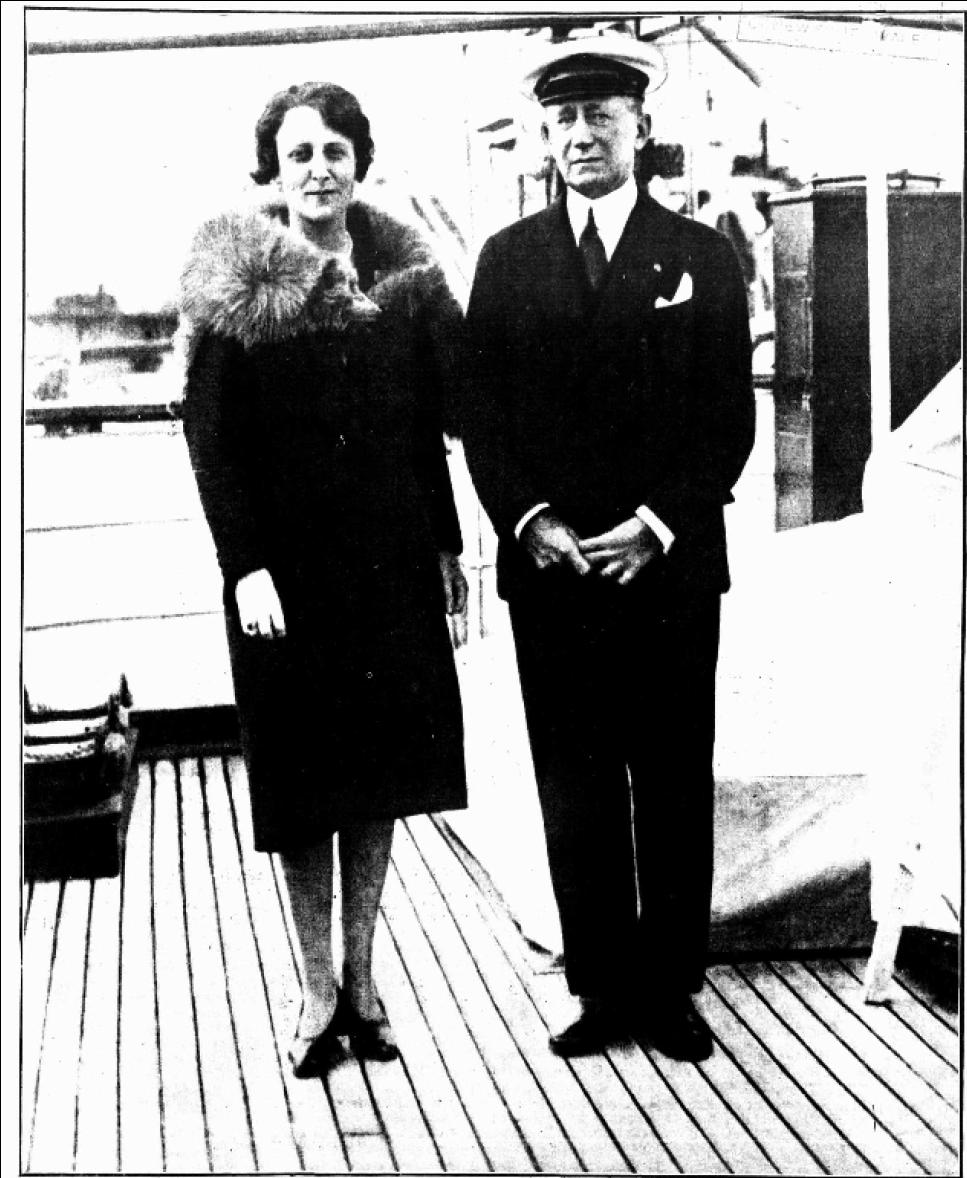
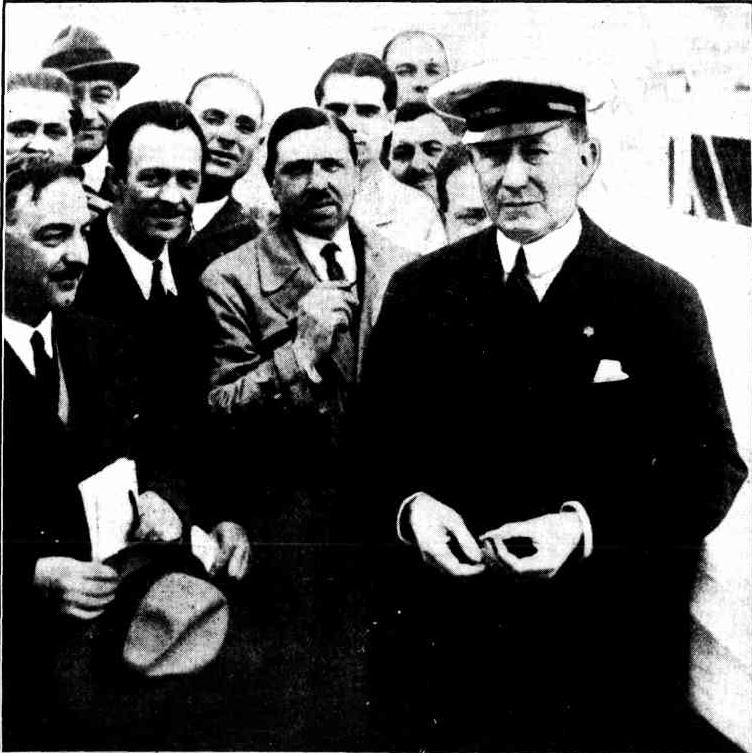
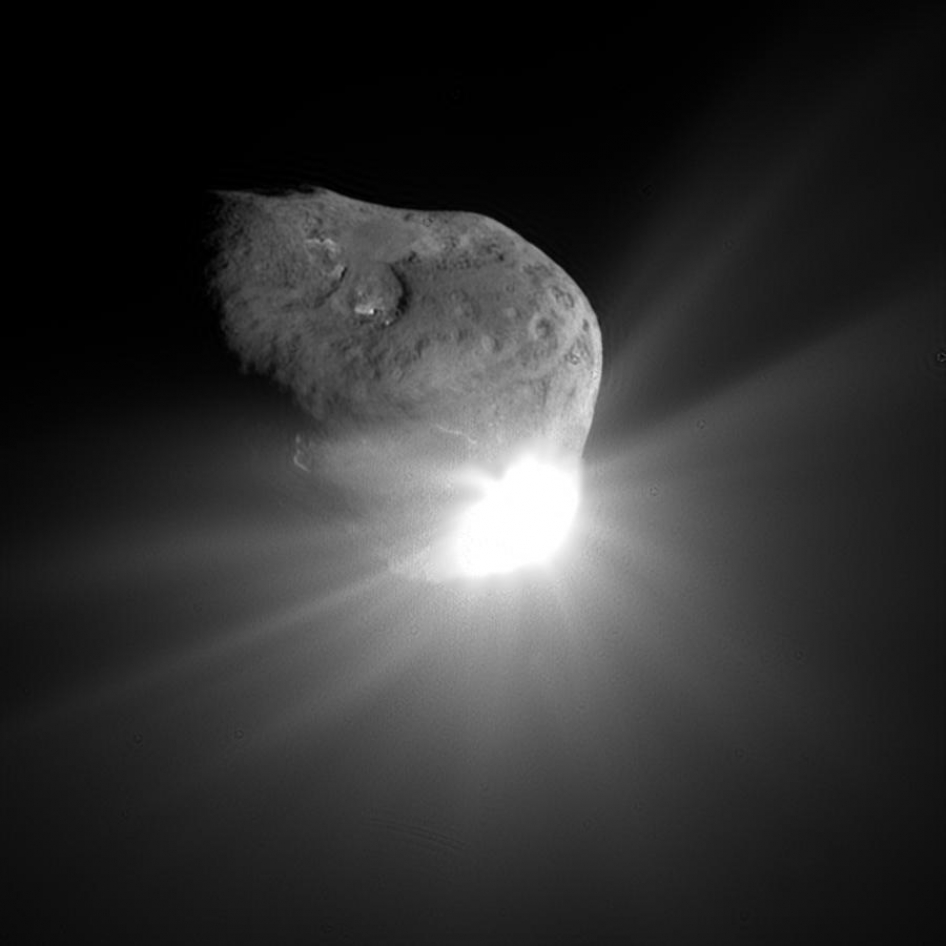
Seqvanae Studios
The Hull Blitz
Hull was the most severely damaged British city or town during the Second World War, with 95 percent of houses damaged. Hull had more than 1,000 hours spent under air raid alerts. Hull was the target of the first daylight raid of the war and the last piloted air raid on Britain.
Of a population of approximately 320,000 at the beginning of the war, approximately 152,000 were made homeless as a result of bomb destruction or damage. Overall almost 1,200 people were killed and 3,000 injured by the air raids.
More than 5,000 houses were destroyed and half of the city centre destroyed. The cost of bomb damage was estimated at £20 million (1952, £518,985,637 as a consumer price equivalent), with 3,000,000 square feet (280,000 m2) of factory space, several oil and flour mills, the Riverside Quay and 27 churches, 14 schools or hospitals, 42 pubs and 8 cinemas ruined; only 6,000 out of the 91,000 houses were undamaged at the end of the war. The extent of the damage was similar to that of the Plymouth Blitz.
Saltend, East Riding of Yorkshire (just outside of the Hull city boundary) suffered the very first daylight raid on mainland Britain. It happened between 16:40 and 17:00 on 1 July 1940 when a German aircraft dropped its bombs on the oil terminal at Salt End during a ‘nuisance raid’ in which the aircraft unsuccessfully attacked several barrage balloons. Shrapnel from the bomb punctured a 2,500 tons holding tank and the leaking petrol caught fire and threatened to cause adjacent tanks to explode. The courageous effort of depot staff and fire brigades prevented a major disaster. Two firemen, Jack Owen and Clifford Turner, and three Salt End workers, George Archibald Howe, George Samuel Sewell and William Sigsworth, were awarded the George Medal for their bravery.
From ' Hull & East Riding at War' website: http://www.hullandeastridingatwar.co.uk/index.php/theblitz
Papers of Jean Battersby, 1966-1985.
40 boxes – National Library of Australia
1966-1985
Summary
MS Acc04.301 comprises personal copies of correspondence, including letters for the signature of the Prime Minister, 1972-1983; papers relating to general arts activities, including invitations, programs and material concerning the Adelaide Arts Festival, 1974-1978; material relating to Battersby's international negotiations in North America, Greece, France and elsewhere, including the South Pacific Festival of Arts; papers and analysis on government policy and support for the arts, both in Australia and overseas; and papers relating to the National Cultural Heritage Committee which Battersby chaired (31 boxes).
The Acc13.149 instalment comprises material collected by Dr Battersby during her period as founding chief executive officer of the Australian Council for the Arts - letters, invitations, speeches, budgets, photographs, press clippings, minutes, conference papers, itineraries, reports on overseas visits and international negotiations, papers relating to cultural exchanges with China, arts policy and programs and other printed items relating to festivals, exhibition openings and other arts events (9 boxes).
Biography
Arts executive and adviser. Born Jean Robinson in Drouin, Victoria, Battersby gained a PhD in French literature at the University of Melbourne with a thesis on nineteenth century poet Charles Baudelaire, and undertook postgraduate studies at the Sorbonne. In 1950 she married Charles Battersby, whom she met as a university student. In 1968 H.C. "Nugget" Coombs, chairman of the Council for the Arts, appointed Battersby its inaugural chief executive. As the Council's Executive Officer Battersby oversaw the development of the advocacy and funding of Australian arts until 1983. In 1987 she established an arts consultancy business, advising Rupert Murdoch on the News Corporation collection and taking on the management of the art collection of Telstra's head office. She was adviser to the Federal Airports Commission and helped set up the precursor to Art Exhibitions Australia. She was appointed an Officer of the Order of Australia in 1986. Battersby died on 24 February, 2009, in Sydney.
A confidential paper on the future administration of the arts in Australia prepared for Mr Whitlam by Jean Battersby, the chief executive officer of the Australian Council for the Arts, stated: The present situation is not satisfactory from an administrative point of view or relevant to the needs of the arts. It is slow, cumbersome, ill-defined and tends to give decisions relating to areas of authority priority over those relating to the interests of the arts. Some of the agencies have different priorities, policies and even philosophies. Their administrative procedures are not coordinated. The advisory role of the Department vis-a-vis the specialist boards to the Minister is obscure and inconsistent.
Arts Policy in Australia A history of Commonwealth involvement in the Arts, Dr. John Gardiner-Garden, 1994. Retrieved fromhttps://www.aph.gov.au/binaries/library/pubs/bp/1994-95/94bp05.pdf
Also see Cultural policy in Australia by Jean Battersby, 1980
Marconi Lights Sydney Town Hall From Yacht Off Italy
SWITCH OPERATED BY RADIO ACROSS 10,000 MILES OF LAND AND SEA
Darkened Hall At Wireless Show Filled With Blaze Of Light FIRST TEST TOO SOON. MARCONI REPEATS OPERATION
SYDNEY, Wednesday.— Wireless history was made tonight when the Marquis Marconi, from his yacht Electra, anchored in the Mediterranean, twice turned on the lights of the Sydney Town Hall. It was the greatest- experiment made in the transmission of wireless energy, and was the first attempt to transmit sufficient power to work a switch from a far station. The lights at the Town Hall flashed on a seventh of a second after Marconi touched a key 10,000 miles away. A huge crowd attended at the Town Hall where the Radio Exhibition is being held, and listened in darkness to short addresses. The director of the exhibition, Mr. M. H. Ellis, was interrupted in toe middle of a sentence by the lights being switched on unexpectedly, eight minutes before time. Mr. Ellis said it was probably a test. Applause thundered for a few minutes, and Mr. Ellis said there was a mistake in the time, although he had synchronised his watch with Marconi's 20 minutes earlier. Officials had the thousands of lights switched off again, and sent a Morse message to Marconi, asking him to repeat the illumination. Almost at. 8 p.m. Marconi replied, the hall suddenly blazing with lights. There was intense enthusiasm, and this time the lights remained on.
'This is a record performance for the world,' declared Mr. Ellis, -through, micro-phones. 'We have received another message from Marconi since he switched the lights on for the second time, saying, 'Very best congratulations to all concerned. Marconi.' Marconi realised a great dream tonight when he touched a key on the Electra's special transmitting set and sent signals to the Lon don end of the Anglo-Australian beam system. "By "
By the beam the impulse was sent to the Amalgamated Wireless receiving station at Rockbank. From, there it was relayed by land line to the head office at Melbourne, and thence to the head office at Sydney. From there the impulse was relayed to the Town Hall, where it released the power and closed the. circuit of the lighting system. To ensure the success of the teat extraordinary efforts were made, and officials at this end were in touch with Marconi until a few minutes before the switching on of the lights. The managing director of Amalgamated Wireless, Ltd., Mr. .E. T. Fisk, attended the exhibition with the' company's engineers. Only 12 years ago Marconi, in England, and Mr. Fisk, in Sydney, exchanged the first wireless message 'between Britain and Australia. ' Professor Kerr Grant (Professor of Physics at the Adelaide University) stated last, night that great as Marconi's success was, the things he had hoped for from the invention would apparently not be realised.
"The operation of a relay such as Marconi's experiment last night is of no particular scientific importance, except that it has never been sent before over such a range." No new principle was involved in it, said the Professor. It was the application of a method and apparatus well known to everybody in-terested in wireless. "The essential factor," he said, "was probably the. use of some highly sensitive form of relay. It may have been a recent German Invention known, in Germany, as the Glimm relay.'
Marconi Marconi Prof. Kerr Grant Prof. Kerr Grant Marconi Lights Sydney Town Hall From Yacht Off Italy (1930, March 27). The Register News-Pictorial(Adelaide, SA : 1929 - 1931), , p. 3. Retrieved from http://nla.gov.au/nla.news-article53493887
Marconi and his Wife on the Electra

Marchese Marconi last week switched on from his yacht Elettra, then lying off Genoa, 2800 lights in the Sydney Town Hall by pressing a key which set in motion the ether signals that were transmitted by beam wireless to Australia. It was regarded as one of the most interesting experiments of the times in wireless transmission, and was a complete success. The photograph shows Marconi on the deck of the yacht with his wife, who was on the vessel when the signal was sent through. Marconi and his Wife on the Elettra (1930, April 2). Sydney Mail (NSW : 1912 - 1938), , p. 5. Retrieved fromhttp://nla.gov.au/nla.news-article160633042
WHEN MARCONI SWITCHED ON.

A photograph of Marconi surrounded by journalists outside the cabin on his yacht just after he had switched on the lights at Sydney Town Hall during the recent exhibition in connection with the electrical and wireless trades. There was great excitement in the harbour at Genoa, sirens sounding, bells ringing, and even an artillery salute being fired from the battery. WHEN MARCONI SWITCHED ON. (1930, May 14). Sydney Mail (NSW : 1912 - 1938), , p. 13. Retrieved from http://nla.gov.au/nla.news-article160631182

**Tempel Alive with Light
This spectacular image of comet Tempel 1 was taken 67 seconds after it obliterated Deep Impact's impactor spacecraft. The image was taken by the high-resolution camera on the mission's flyby craft. Scattered light from the collision saturated the camera's detector, creating the bright splash seen here. Linear spokes of light radiate away from the impact site, while reflected sunlight illuminates most of the comet surface. The image reveals topographic features, including ridges, scalloped edges and possibly impact craters formed long ago.
Image credit: NASA/JPL-Caltech/UMD
Distribution Maps of Coma and Regional Spectra in Coma
Results from the Infrared spectrometer in work lead by Lori Feaga of University of Maryland, show asymmetric distributions of both water and carbon dioxide gases in the coma of Tempel 1. The water is enhanced in the sunward direction, where sunlight sublimates water ice. The CO2 is enhanced off of the southern hemisphere of the comet. This suggests that the composition of the nucleus of the comet is not uniform, and is heterogeneous. One of the major objectives of the mission was to determine whether comet nuclei are uniform in composition. The answer is no. Detailed study of these coma asymmetries gives insight to the relative abundances of the dominant molecular components of the inner coma, source regions of the native volatiles, anisotropic outgassing of the nucleus, and the formation and evolution of the nucleus.
Photo Credit: NASA/UM/Lori Feaga
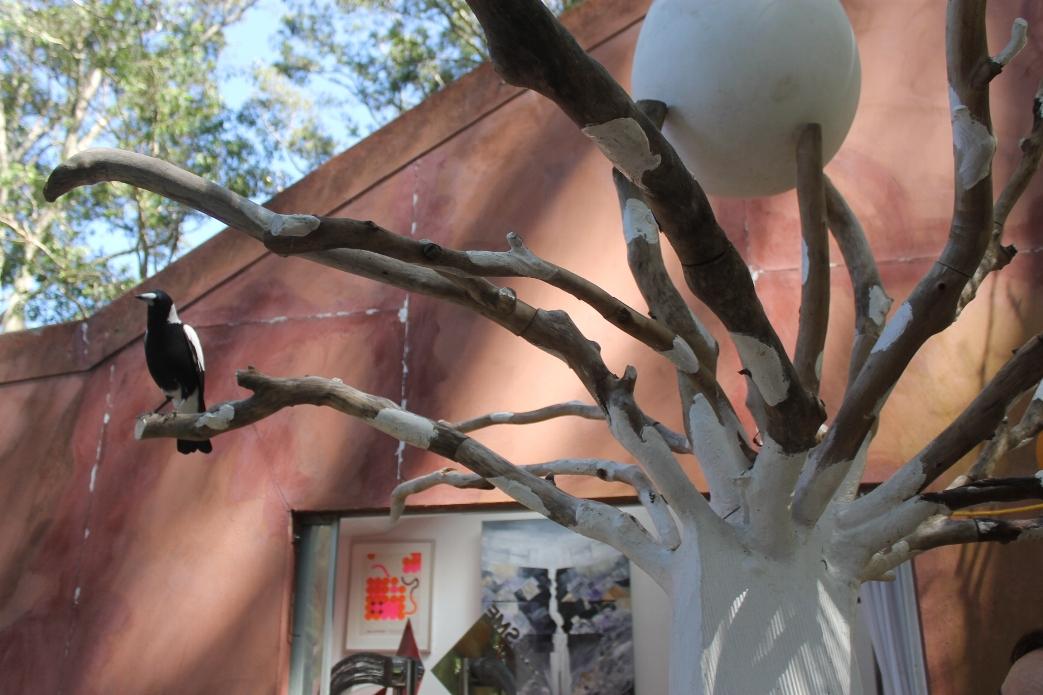
A Magpie lands on one of Mike's "Gai-um-garm" (2013) during the Interview - 'now that's appropriate!' he laughs
